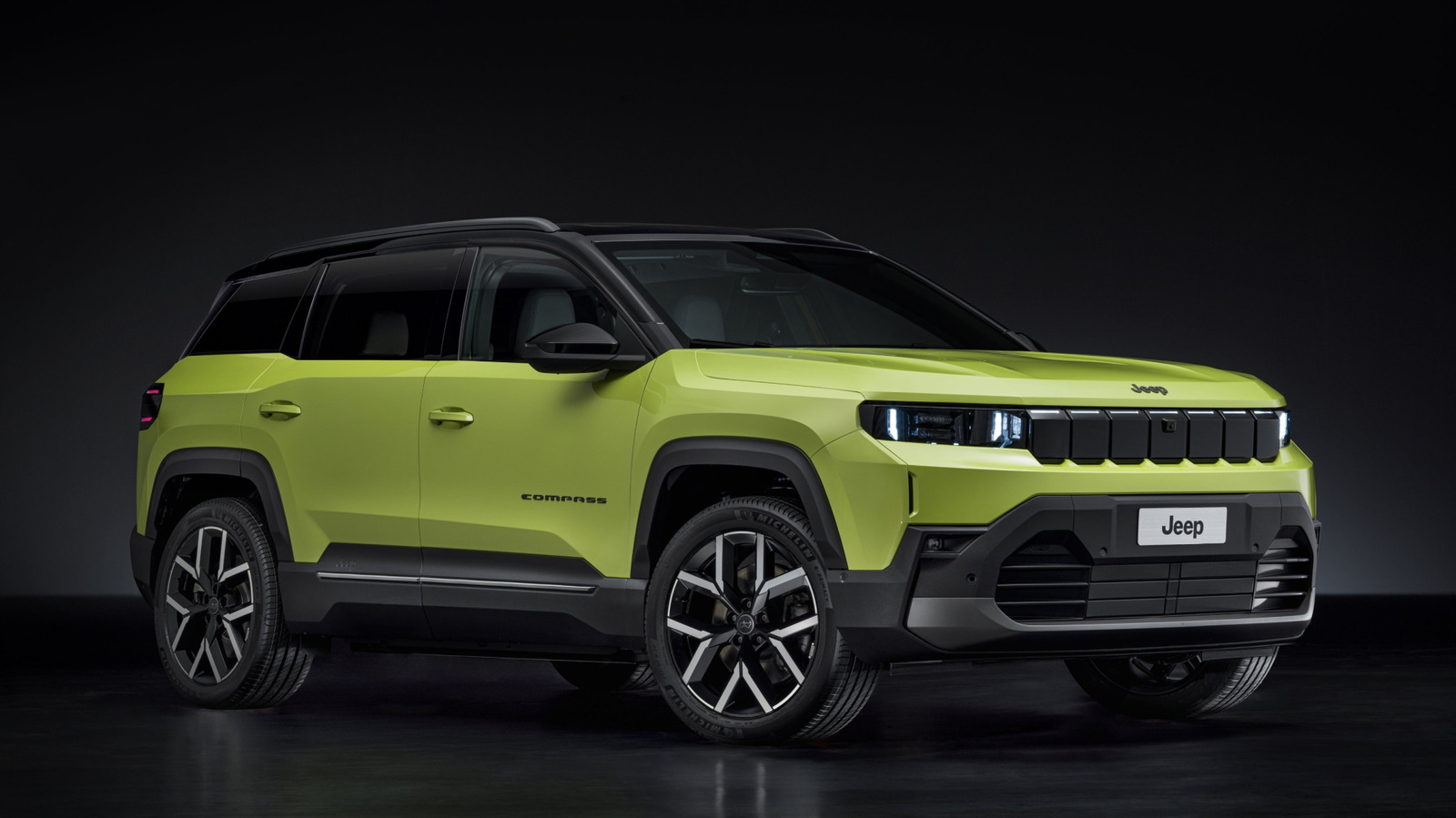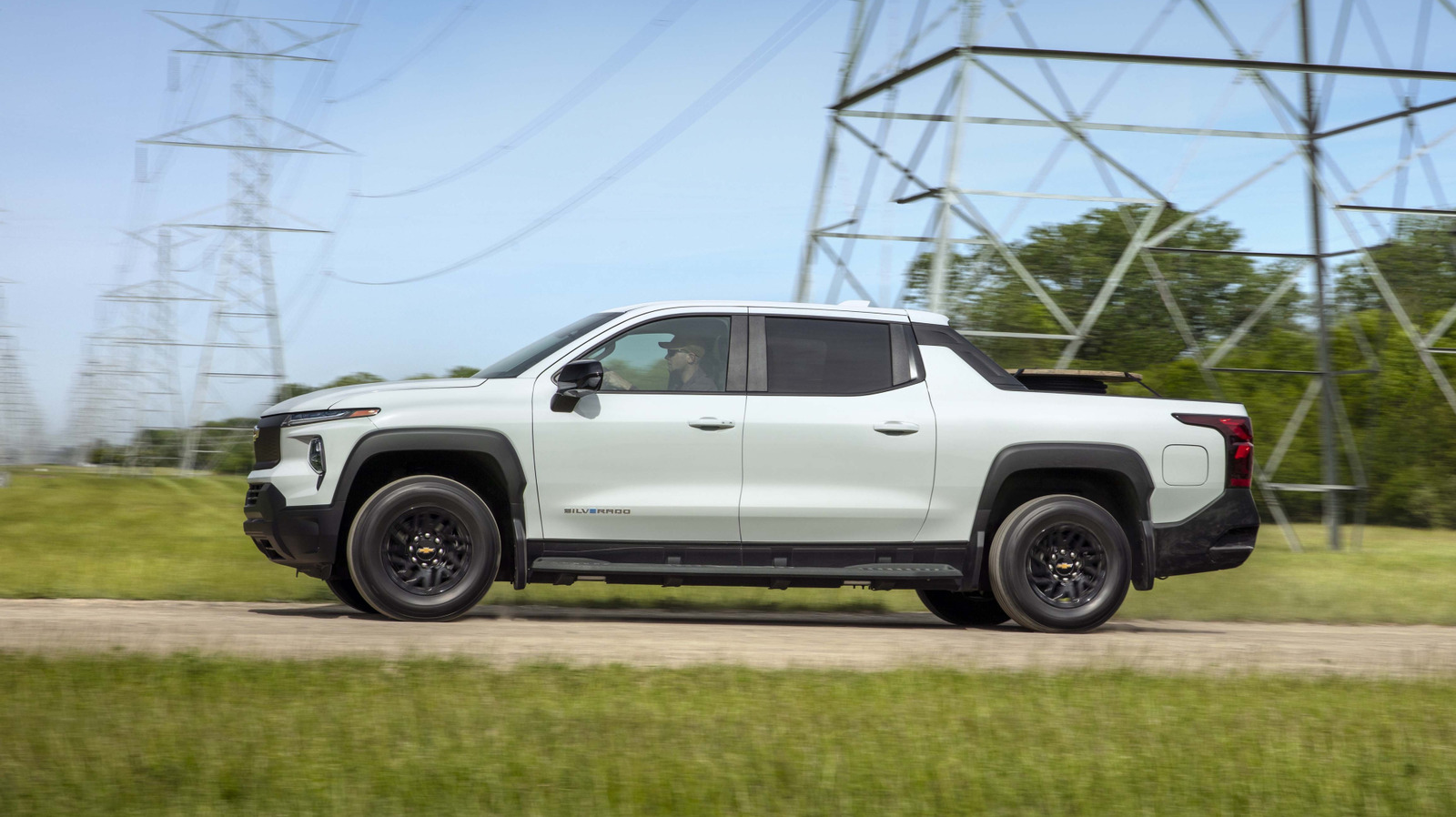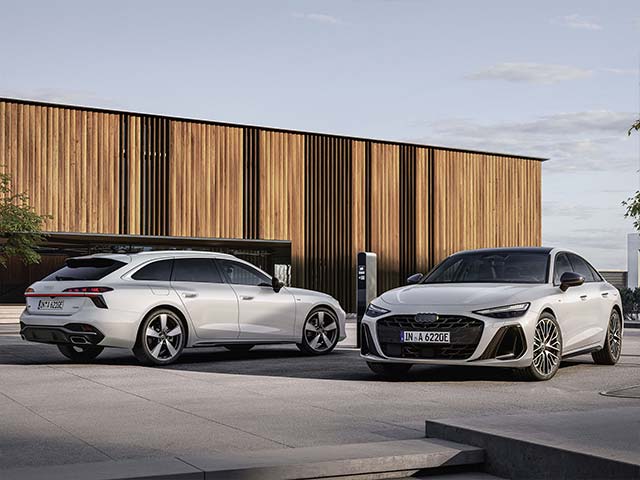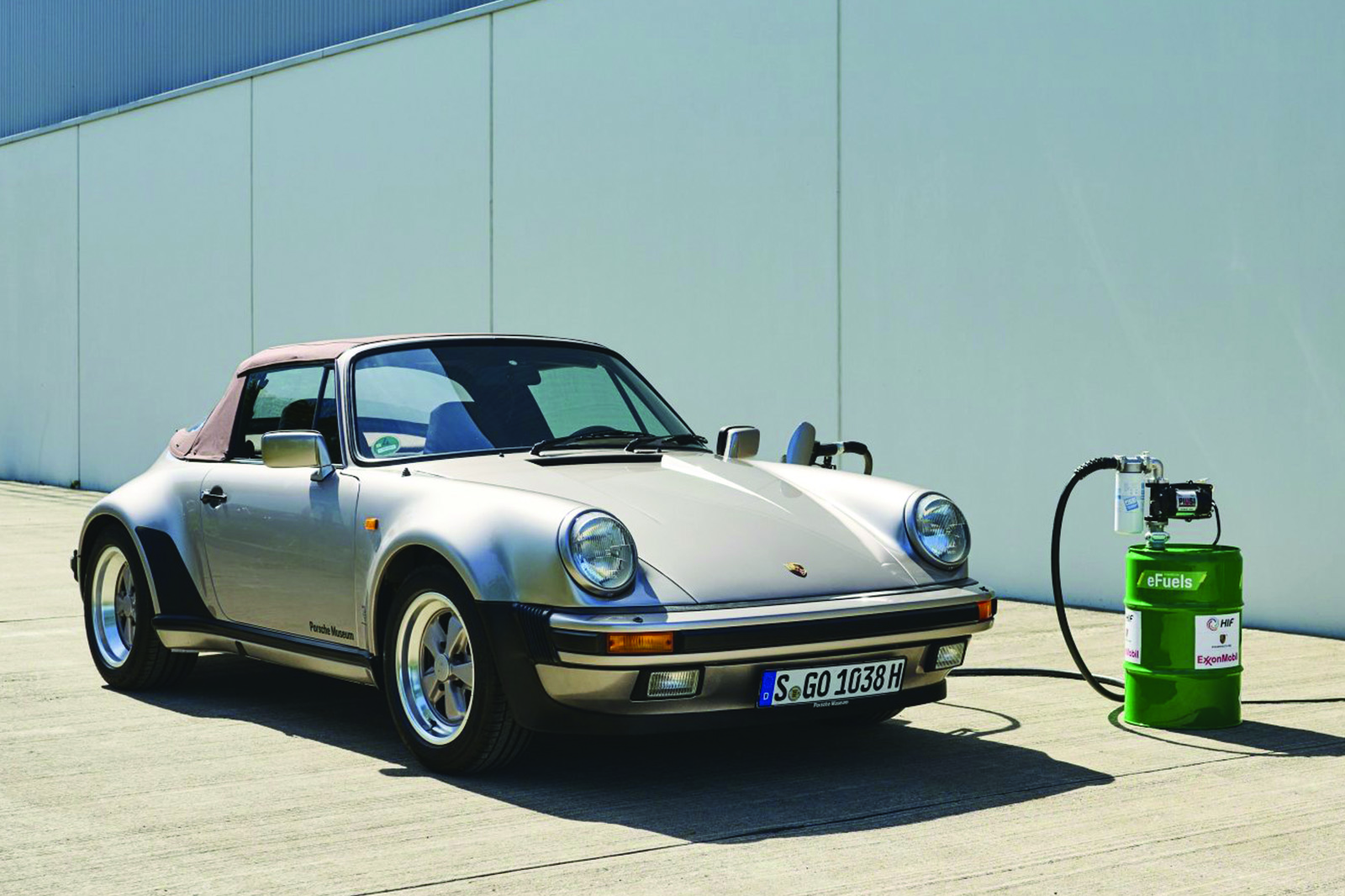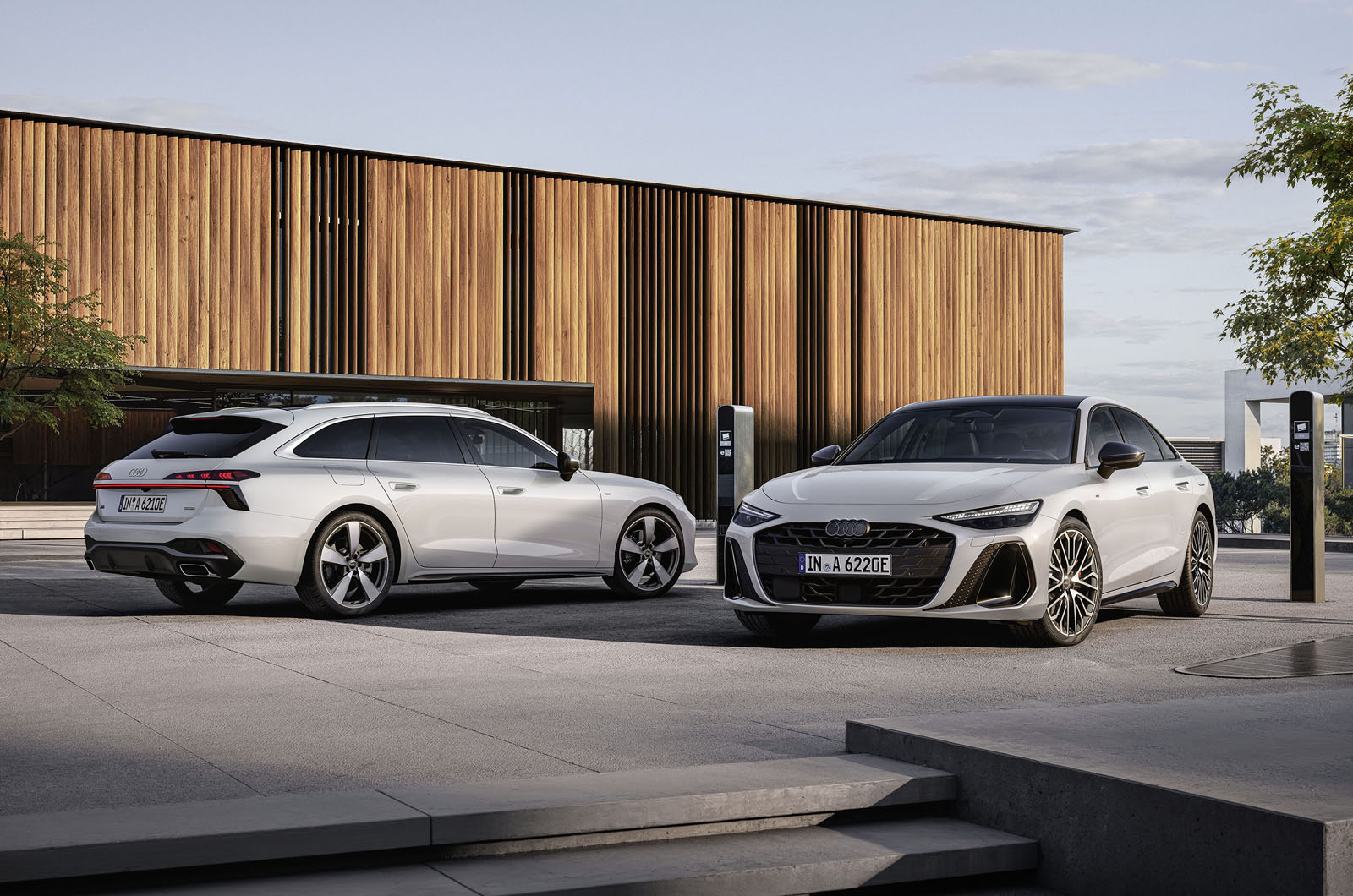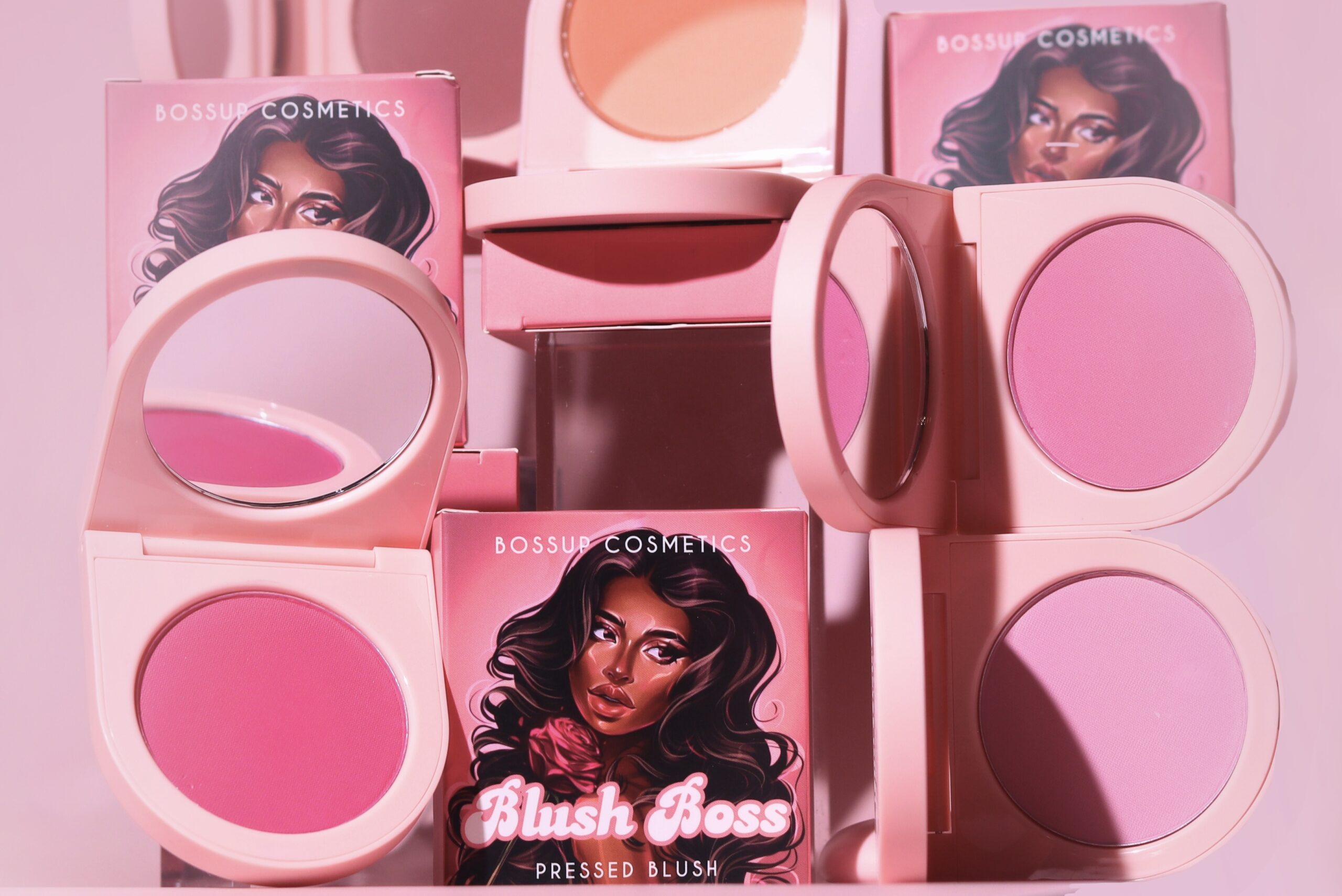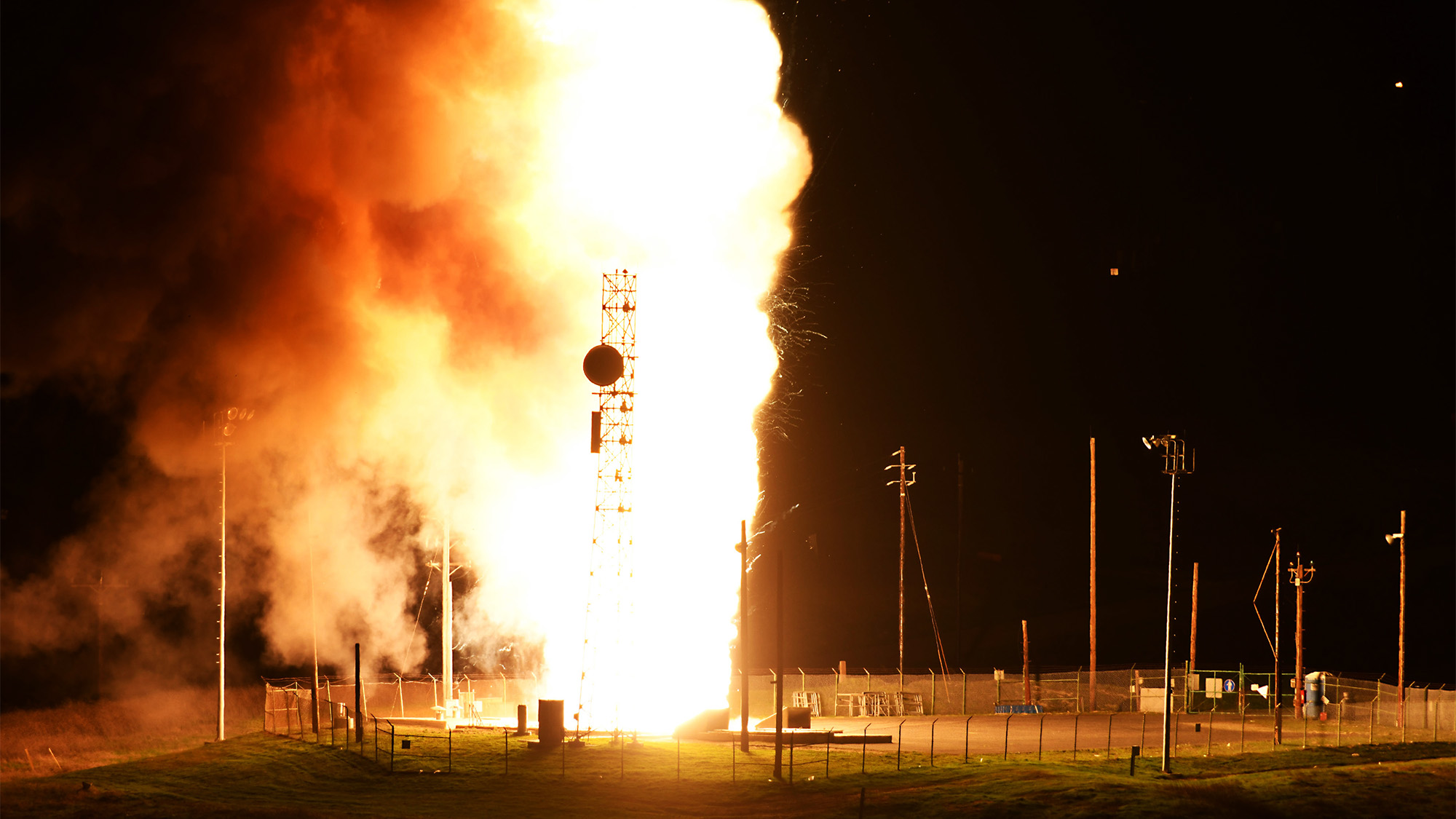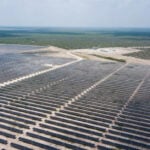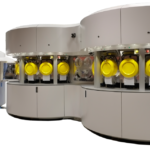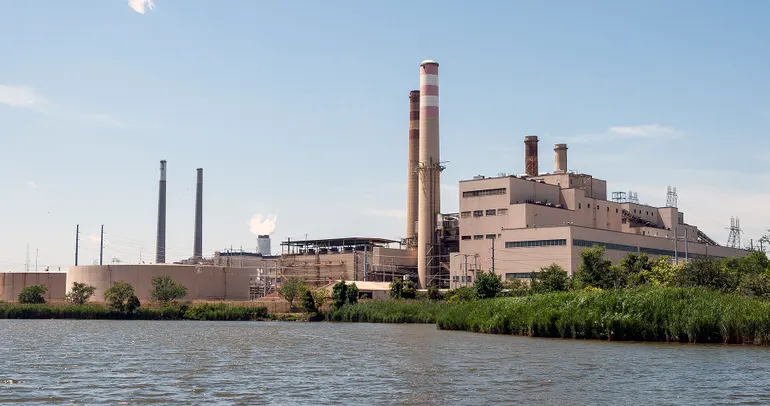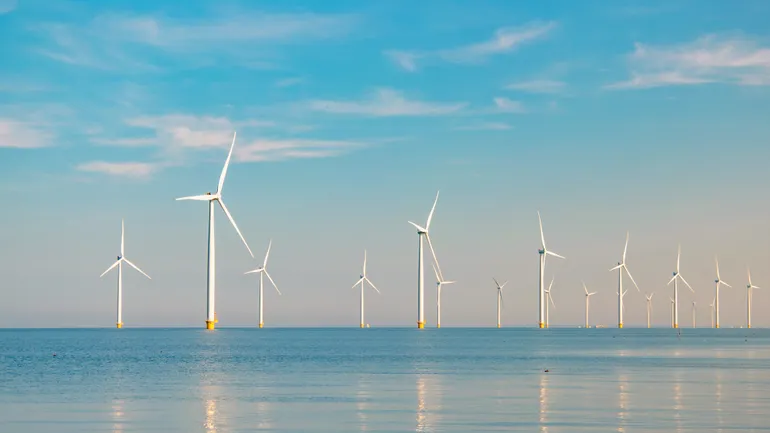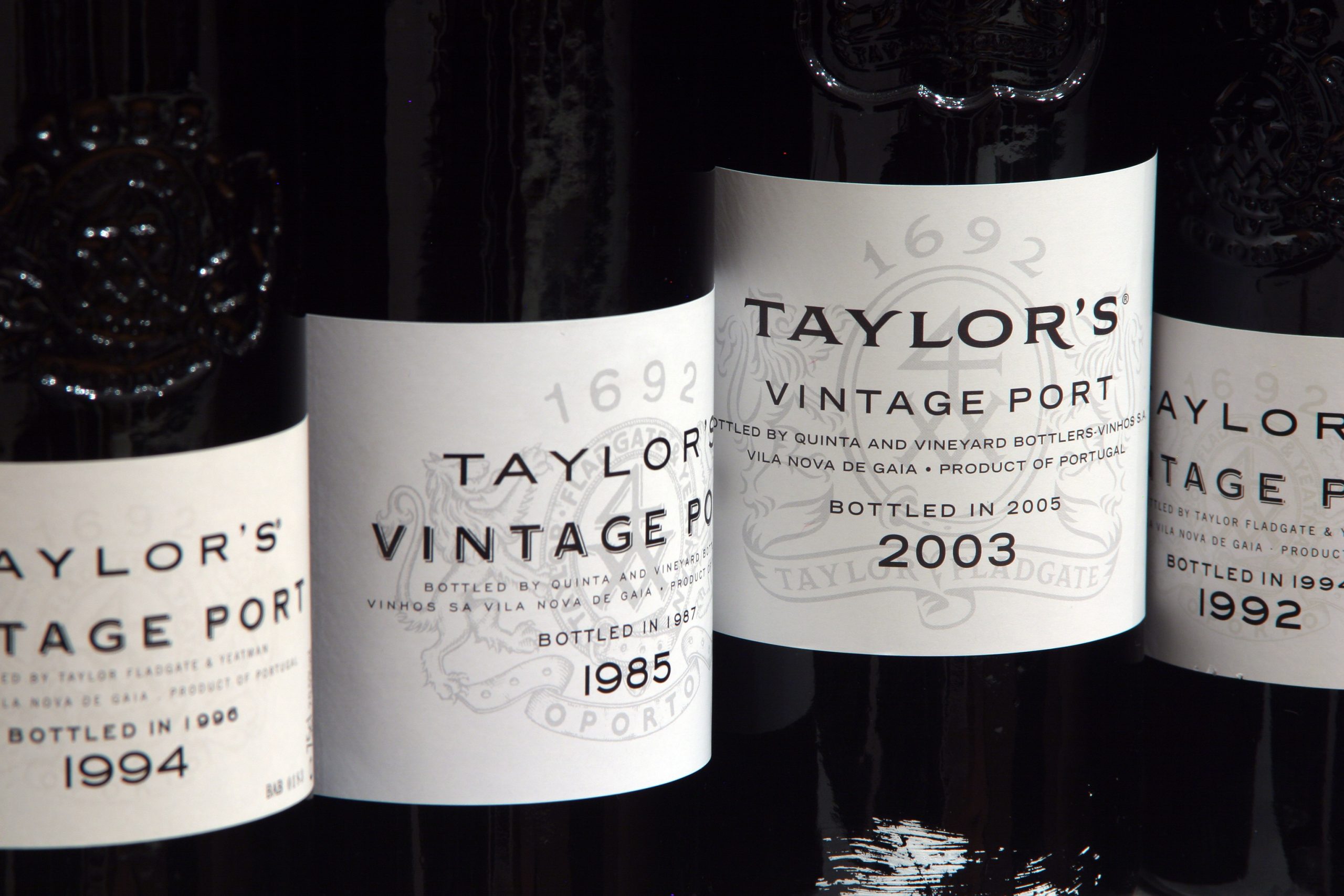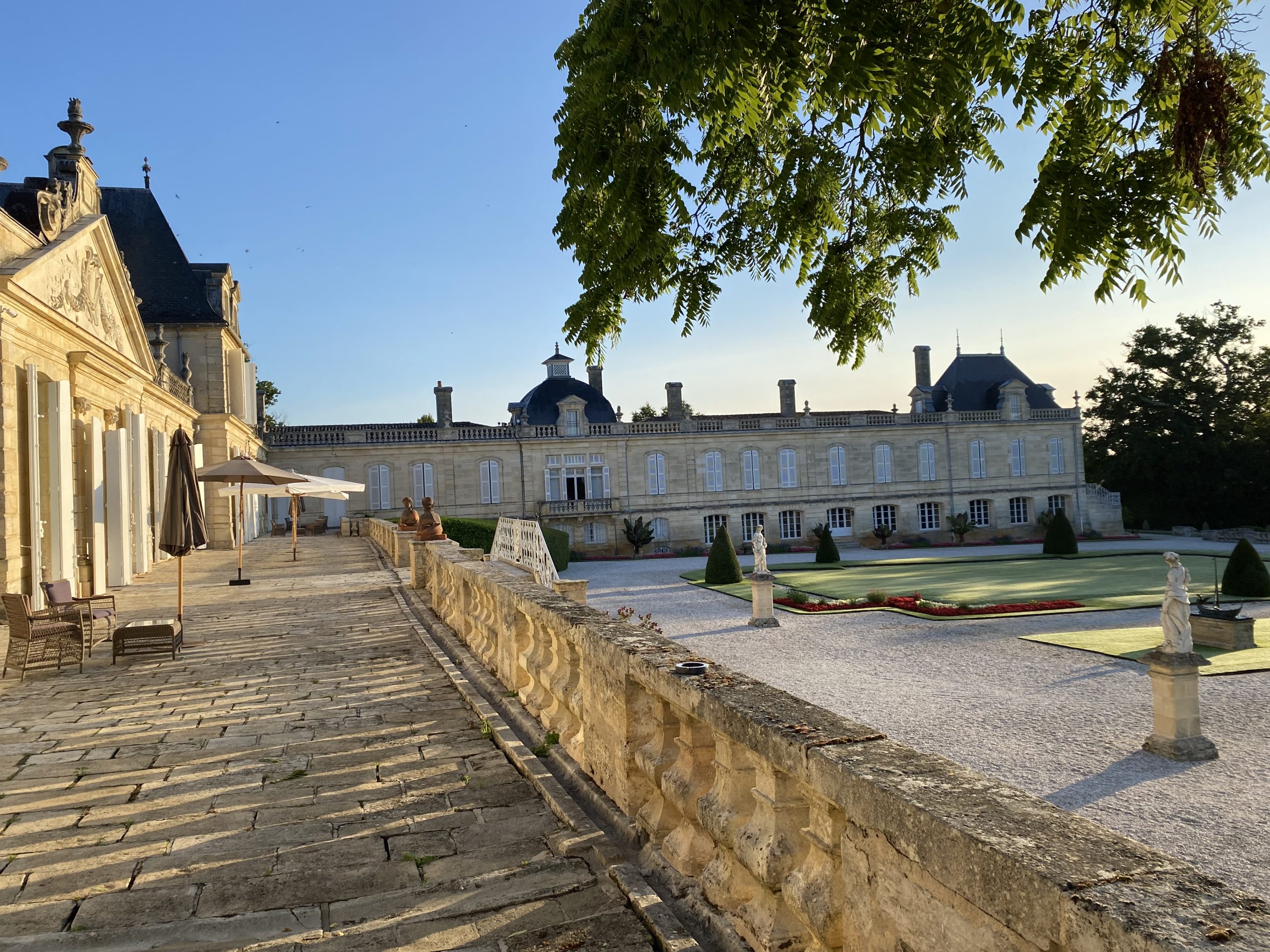Db’s Bordeaux correspondent Colin Hay finds the challenges of the 2024 vintage were unevenly distributed across Pessac-Léognan with - broadly speaking, the north not faring as well as estates in the south. Here are his tasting notes.
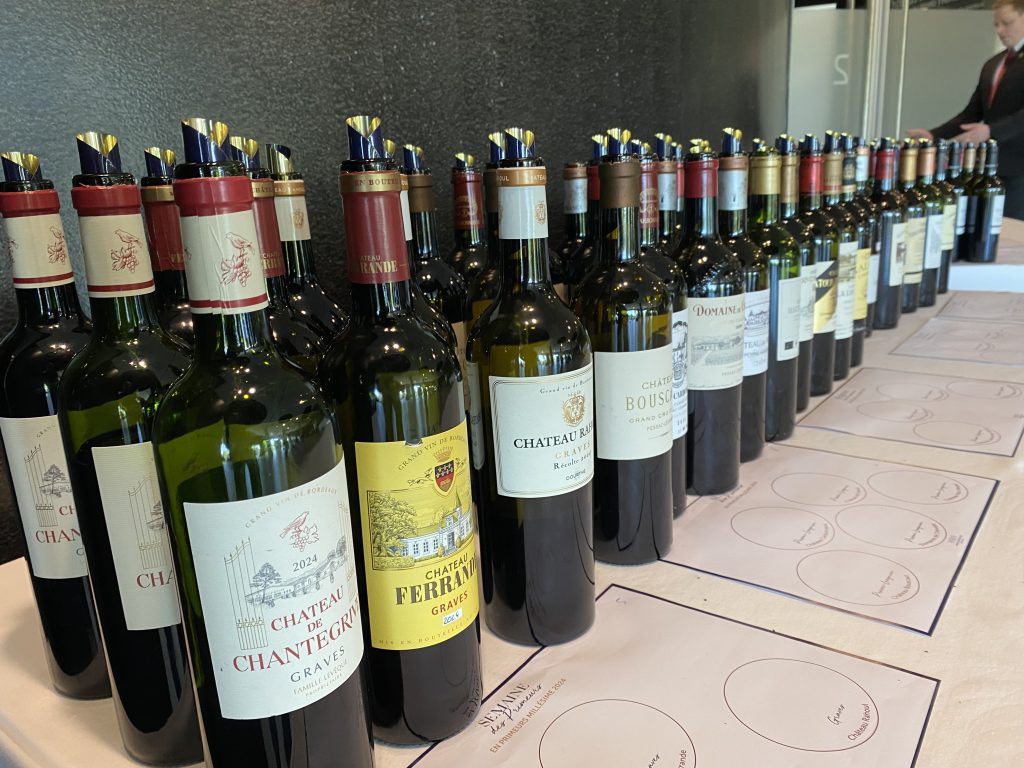
I continue to provide an indicative rating for each wine alongside the published comment. All such comments and ratings are necessarily subjective. I would urge you to look at the two together and, if anything, to privilege the comment over the rating. My aim is more to describe the wine in the context of the vintage, the appellation and recent vintages of the same and similar wines, rather than to judge the wine per se.
The ratings, of course, reflect my subjective evaluations and relative preferences between wines. Your palate is likely differ from mine. I hope that my comments give you at least enough information to be able to recalibrate my ratings and, in so doing, to align them more closely to your own palate
2024, like both of its predecessors is, of course, a far from homogeneous vintage – and, consequently, my ratings span a considerable range (from the very top of the scale downwards). I see little interest, either for the consumer or the producer, in publishing very low scores. Consequently, I have decided not to publish scores for classed growths (or equivalent wines) that I have rated below 90 (here the range 89-91) and for crus bourgeois (or equivalent wines) that I have rated below 88 (here the range 87-89). Where no rating is published, the wine would have scored below these thresholds.
Finally, élevage is likely to be very important in determining the quality in bottle of these wines. I am no soothsayer and cannot predict how that will turn out (another reason for the use of banded ratings). But all en primeur ratings should be treated with caution and taken with a certain pinch of salt.
Detailed tasting notes (from over 50 wines tasted)
Château Bouscaut (Pessac-Léognan; 58% Merlot; 30% Cabernet Sauvignon; 12% Malbec; a final yield of 35 hl/ha; 13.5% alcohol; tasted twice, first with
Sophie Lurton & Laurent Cogombles and then at the UGCB Press tasting at the Cité du Vin). A mix of red and darker berry fruits, with a little red cherry and plum, maybe a subtle hint of redcurrant too. There’s a natural sweetness to this on the attack that you don’t quite anticipate from the rather taciturn aromatics. Quite a narrow frame giving this more of a sense of impact. Quite linear too, but never strict. A hint of hazelnut and, with it, a certain creaminess. A touch of its signature iron minerality too. The tannins are fine-grained and this is well managed even if it doesn’t quite set my pulse racing.
90-92.
C de Carmes Haut-Brion (Pessac-Léognan; 62% Cabernet Sauvignon; 37% Merlot; 1% Petit Verdot; pH 3.55; aged in 25% new oak, 50% in vats of 30 hl and 11% in amphorae; whole bunch fermentation at 29%; 12.9% alcohol, with 0.6% of chaptalisation; tasted with Guillaume Pouthier at Les Carmes Haut-Brion). Very nutty, with a sense almost of peanut. Espresso coffee bean. The absence of coulure and millerandage allowed more whole bunch fermentation here in Martillac. Intense plum and dark berry fruits, really crunchy and fresh, radiantly sapid and juicy. The cassis is very noticeable. The amplitude on the attack increases the space that the rippling eddies of fresh fruit seek to fill. Blueberries too and brambles. Very pure, focussed and precise, with impressive density and intensity (reinforced by the whole-cluster fermentation). Very fine tannins that pinch and structure the wine, producing a gloriously lifted fantail finish. Really rises above the challenges of the vintage, with great harmony, balance and energy.
92-94.
Château Cantelys (Pessac-Léognan; from Daniel & Florence Cathiard). As with the white, the stylistic similarities with Smith are evident. Rich, bold and quite ample on the attack with a plush and plump, pulpy berry fruit, some wild sage and Italian herbs, a hint of coconut and a subtle touch of oak (but not too much). There’s an inkiness to this in the mid-palate that is rare and the freshness never threatens to become tart or astringent. Well-balanced if just a tad dry on the finish.
87-89.
Château Carbonnieux (Pessac-Léognan; 60% Cabernet Sauvignon; 30% Merlot; 5% Cabernet Franc; 5% Petit Verdot; a final yield of 40 hl/ha; 13% alcohol; tasted twice, first at the UGC press tasting at the Cité du Vin). Red and darker cherry and cherry stone notes, a little damson and bramble but really only after quite a bit of energetic swirling. A touch of cedar and graphite. This is one of the successes of the appellation and there is a sense here that the red as well as the white have been on a steep upward ascent, evident here. Soft tannins, quite a creamy mid-palate if nothing of the weight and density – nor complexity – of the 2020 or 2022. If I’m being picky, I’d like a little more shape in the mid-palate.
89-91.
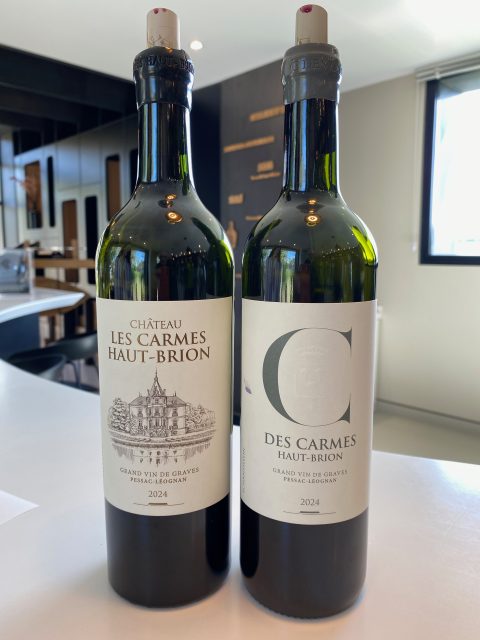 Château Carmes Haut-Brion
Château Carmes Haut-Brion (Pessac-Léognan; 48% Cabernet Franc (Bouchet) – 10% more than usual; 29% Cabernet Sauvignon; 23% Merlot; pH 3.61; aged in 70% new oak, 19% in vats of 30 hl and 25% in amphorae; whole bunch fermentation at 52%; a final yield of 24 hl/ha; 13.2% alcohol with no chaptalisation, picked at 13.9% and reduced with the whole bunch; tasted with Guillaume Pouthier at the property). I find this more like Cheval Blanc than ever before! The lowest ever proportion of Merlot in the final blend. A very long floraison of 3-4 weeks, with the biggest problem being the variation in the ripeness of the grapes within the bunches arising from coulure and millerandage. Densimetric sorting was crucial, with almost 40% of the harvested crop rejected (everything below 11.5% of potential alcohol). In the process a potential yield in the vineyard of 45 hl/ha was reduced at picking to 41 hl/ha, with just 24 hl/ha selected for vinification. The average age of vines is now 65 years. The density in the mid-palate is reinforced by the whole bunch fermentation. Instantly nutty. Walnuts and walnut oil. Iris. Peony. Peony bulb. Marjoram. Crushed and yet-to-be-crushed blueberries, a little black cherry too and that lovely authentic Cabernet Franc leafiness. That renders this very aerial but there is no mistaking the great gravitas and profundity too. This has a great vertical range which Guillaume Pouthier compares to a diamond shape in the mouth – though I find it less angular than that implies. Cedar and graphite, with more and more of the former with aeration. Saline, with even a touch of iodine. Succulent, intensely juicy and with a rare viscosity and density – this actually pushes the cheeks. The viscosity of the sapid finish produces almost the sensation of the transposing of the ‘tears’ in the glass to inside of one’s cheeks. Beautifully shaped and structured, lush and plush, plump and generous. Vintage transcendent and clearly the wine of the vintage in the appellation.
96-98.
Château Chantegrive (Graves; 58% Merlot; 40% Cabernet Sauvignon; 2% Petit Verdot; a final yield of 32 hl/ha; 13% alcohol; tasted twice, first at the UGC press tasting at the Cité du Vin). Quite floral. Rich and plump in the context of the vintage and impressively creamy. Nicely managed, this is not ample on the attack but not too strict either, the tannins reining in the plummy fruit and drawing it to the spine. Quite long with the tannins shading drier towards the finish.
87-89.
La Chapelle de la Misson Haut-Brion (Pessac-Léognan; 56.3% Cabernet Sauvignon; 29.2% Merlot; 14.5% Cabernet Franc; a final yield across the two estates of 26 hl/ha for the reds here; pH 3.67; c. 12.9% alcohol). Fragrant, quite leafy, with a touch of sweet spice. Soft, gentle and quite delicate with a lovely softness. Walnut oil from the ripe tannins. Densimetric, then optical and then visual sorting was crucial. Gracious, soft and refined, with very fine-grained tannins. Not the deepest, the richest or the most concentrated, but the product of excellent choices with a lovely resulting creaminess.
91-93.
Le Clarence de Haut-Brion (Pessac-Léognan; 45.7% Merlot; 32.3% Cabernet Sauvignon; 22% Cabernet Franc; a final yield across the two estates of 26 hl/ha for the reds here; pH 3.65; c. 13.1% alcohol). Darker fruited in a way than La Chapelle, perhaps a little creamier and glossier, more floral with blooms of hibiscus and a little pink rose petal too, more and more in fact with aeration. Ample, generous and gentle on the opening, almost pushing the cheeks and quite lush for the vintage in the mid-palate. Aerial and lifted, if without the full delineation and detail and complexity of Haut-Brion itself. Very attractive and with a lovely uplift of fresh darker berry fruit notes in the midst of the palate, like the fountain outside the tasting room. But a sense a touch of dryness on the finish.
91-93.
Le Comte de Malartic-Lagravière (Pessac-Léognan; 47% Merlot; 40% Cabernet Sauvignon; 13% Petit Verdot; a final yield of 19hl/ha; pH 3.54; 12.5% alcohol; Eric Boissenot is the consultant; tasted at the property). The Merlot was depleted by mildew. Nicely done and very much in the style of Malartic. Dark berry fruited with a little damson as well. Wild rosemary. Fresh and plump, no great length with but lovely soft tannins. More red-berried on the finish – cranberries and redcurrant. Juicy and sapid. Nice tension but not too much acidity.
89-91.
Château Couhins (Pessac-Léognan; 60% Cabernet Sauvignon; 40% Merlot; from 23 hectares on gravel-rich hilltop over a clay subsoil; a final yield of 37 ha/hl; 12.5% alcohol; certified organic; tasted twice). Aromatically this is very Pessac – in fact, Léognan – with a waft of smoke alongside that delightful wild herbal notes, a hint of charcuterie and quite a rich, dark stone and berry fruit. The minerality is evident too. Fine and quite soft and succulent for the vintage with a more gracious flow over the palate than many of its ostensible peers, the acidity well integrated. Bright and crunchy but never severe. Nice grippy tannins release a wave of sapidity on the finish.
91-93+.
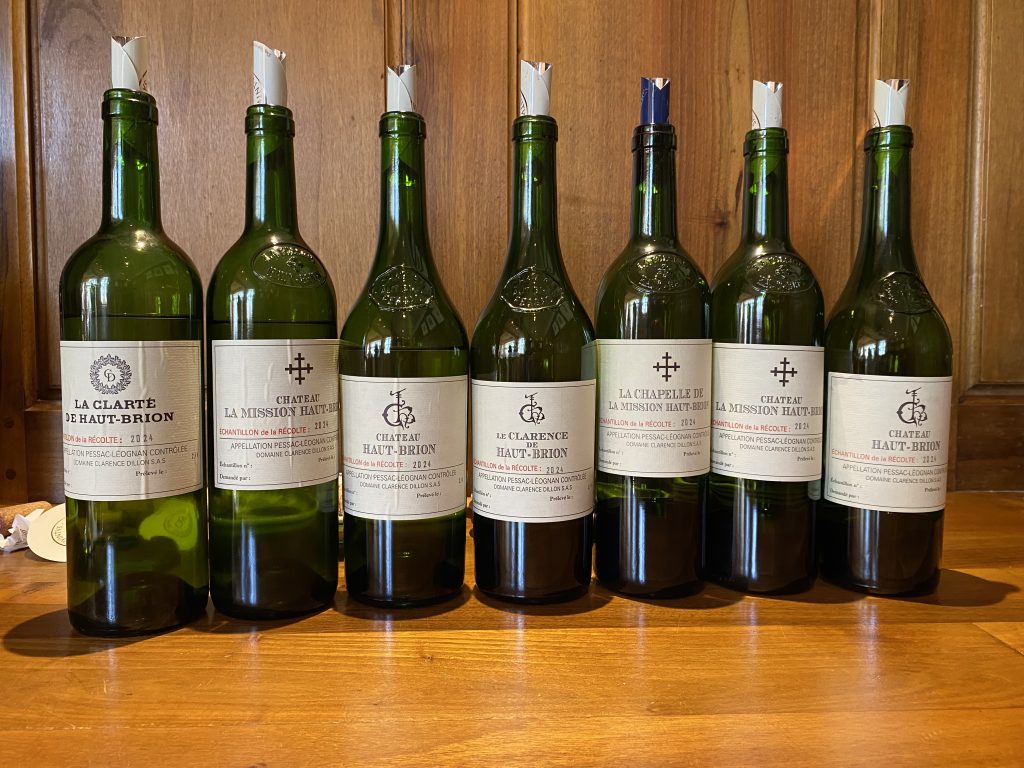 Château Couhins Lurton
Château Couhins Lurton (Pessac-Léognan; 85% Merlot; 15% Cabernet Sauvignon; 13.5% alcohol; a final yield of 47 ha/ha; Eric Boissenot is the consultant; tasted twice, the first time at La Louvière). Creamy but tense. Very Merlot and very pure in its fruit profile – cassis and redcurrant with the tension that the latter implies; red cherries too. More cassis comes through in the mouth. Lovely purity. Fresh and tense. A very present backbone. Very fresh on the finish but that together with the tannic grip underscore the purity of the fruit. Grape skins right at the end. Impressive and almost a little Margellais in that it’s very floral for Pessac, with delicate spring flowers. Never strict, unlike many, this has been well-achieved.
92-94.
Domaine de Chevalier (Pessac-Léognan; 65% Cabernet Sauvignon; 30% Merlot; 5% Petit Verdot; an impressive final yield of 48 hl/ha; 12.5% alcohol, with 0.3 degrees of chaptalisation; tasted twice, first the UGC press tasting at the Cité du Vin). A lovely relaxed aromatic presence – lots of cedar, a touch of graphite and pencil shavings, damson, dark berry fruits and a little black cherry. I love the little floral note too – difficult to pinpoint, but it’s there. Peony is the closest, maybe lily of the valley too. There’s a characteristic glossiness to this that is oh so Domaine de Chevalier. Not the density of recent vintages, but a certain sense of poise and elegance. Nutty notes on the finish indicating ripe pips.
92-94+.
Château Ferrande (Graves; 45% Cabernet Sauvignon; 55% Merlot; pH 3.67; 13% alcohol; tasted twice, first at the UGC press tasting at the Cité du Vin; Thomas Duclos is the consultant here; certified organic). More lifted aromatically than de Chategrive, less relaxed, more taut and more herbal too. Less creamy. Red and darker berries, cherries and sandalwood. A little oaky when re-tasted but with a nice crystallinity. Rather stern on the attack, but there is a pulpiness to the fruit that I rather like and even a hint of graphite in the midst of the mid-palate. Quite glossy and shapely. A success in the context of the vintage.
88-90.
Château de Fieuzal (Pessac-Léognan; 45% Merlot; 40% Cabernet Sauvignon; 15% Petit Verdot; a final yield of 29 ha/ha; 12.95% alcohol; Thomas Duclos has been the consultant here for the last 5 years; tasted twice, first with Stephen Carrier at the property). The character of the vintage is very much more obvious on the palate than aromatically – with the nose rather more sunny and solaire, a pleasing contrast to many. Hyper-expressive and with that lovely very pure, precise, freshly crushed ripe red berry fruit – raspberry and loganberry. Sandalwood, a de Fieuzal signature. Blood orange, above all with aeration. Fennel seed. A little hint of redcurrant and a little blueberry too. Very lithe and ethereal. Aerial on the palate. Glassy. Crystalline. There’s a touch of graphite and even cedar – rare in the vintage – with aeration. This is very refined and quite Burgundian in a way. Elegant and pure. It maybe lacks a little of the complexity of the 2 previous vintages, but it fills out as the wine inhales and this was tasted first only a week after the assemblage. Very mineral and quite saline on the finish.
92-94.
Clos Floridène (Graves; 60% Cabernet Sauvignon; 40% Merlot; 13% alcohol). Quite plush, soft and gentle, yet ample and generous – much like the white in fact in its form in the mouth. There’s impressive detail and precision and some layering, but no great terroir complexity to reveal. But this very fine for the likely price-point and it shows an excellent management of the vintage.
87-89.
Château de France (Pessac-Léognan; 50% Merlot; 50% Cabernet Sauvignon; a final yield of 42 hl/ha; 13% alcohol; tasted twice, first at the UGC press tasting at the Cité du Vin). Very red-berry fruited – strikingly different in that respect from the others in the UGC line-up – with leafy redcurrant, cranberry and even pink gooseberry notes. That makes this sound tarter than it is – for it’s actually sweeter on the palate than that implies. Supple and subtle, but quite energetic and dynamic. Fresh but never tart nor astringent nor dry. Distinctive. I rather like this. A property on an upwards track.
89-91.
Château La Garde (Pessac-Léognan; 55% Cabernet Sauvignon; 45% Merlot; a little more press wine than it used to have; Axel Marchal is the consultant here). Pure. Croquant. Bright red and darker berry fruits. Glassy and very fine in its purity and clarity. Layers of silk. Lots of cassis. This is nicely handled and gains in quality with each year. It expresses the vintage just as it deals with its challenges very well.
90-92.
Château Haura (Pessac-Léognan; 60% Cabernet Sauvignon; 40% Merlot; 13% alcohol). Naturally sweeter, rich and more plush and plump than Clos Floridène this once again impresses. Bright, fresh, crisp and crunchy red and darker berry fruits, a little hint of heather and moorland flowers. There’s a waft of oak smoke and tabac and a hint of newly scratched leather, also a more ferrous bloody meaty element. Very Graves. Very good in the context of the vintage too.
89-91.
Château Haut-Bailly (Pessac-Léognan; 58% Cabernet Sauvignon; 40% Merlot; 2% Cabernet Franc; a final yield of 30 hl/ha; pH 3.65; aged in 50% new oak; 13% alcohol; around half of the total production; tasted with Veronique Sanders at the property). There were no problems of coulure and millerandage here. Sandalwood, graphite, a hint of cedar, plump and plush dark berry and damson fruit. A little pink and green peppercorn. Subtle wild floral notes – small spring flowers. Sage and sprigs of thyme. So soft and gentle on the entry, hyper-layered a little like Don Giovanni’s list of conquests – each time you get to the bottom you find another line, another layer! Super refined, ultra-elegant and transcendent of the challenges we associate with the vintage. A very subtle note of red liquorice. So fine and gentle, so lithe and poised. A very great success. A lovely evolution in the glass too as the cedar starts to emerge. It’s actually very classical.
94-96.
Haut-Bailly II (Pessac-Léognan; 45% Cabernet Sauvignon; 45% Merlot; 8% Petit Verdot; 2% Cabernet Franc; pH 64; 13% alcohol; around 30% of the total production; tasted with Veronique Sanders at the property). A lovely gentle and very natural sweetness here. Plums and a mix of red and darker berry fruits. Almost a touch of confit strawberry. Cranberry. Sandalwood. A nice touch of Haut Bailly graphite. Glossy on the entry with lovely fine-grained tannins, the acidity very well integrated. Plush in the mouth and a good introducton to the grand vin. This shows how good the second wines can be. I love the very fine-grained but tactile tannins on the finish.
91-93.
Château Haut-Bergey (Pessac-Léognan; 51% Cabernet Sauvignon; 38% Merlot; 8% Cabernet Franc; 3% Petit Verdot; 13% alcohol). True to its identity, this is one of the most iron-rich aromatically. Dark stone and berry fruits, a sprig of heather and some wild herbal elements. Supple, juicy tannins and quite a succulent mid-palate but one marked its acidity. It’s never quite tart or astringent but it’s quite close to traversing that fine line. A little dry on the finish.
88-90.
Château Haut-Brion (Pessac-Léognan; 47.2% Cabernet Sauvignon; 37.5% Merlot; 15.3% Cabernet Franc; a final yield across the two estates of 26 hl/ha for the reds here; pH 3.70; c. 13.2% alcohol; 1.7% press wine). Delicate, again, and intensely floral – with ethereal, subtle but sustained and ultimately quite intense violet and fresh rose petal notes enrobing the soft, plush and plump cherry and dark berry fruits. Ample, again, much like La Mission on the attack with, again, a broad frame. At first one does not notice the tannins, but they become more and more of a presence, descending as if vertically like fine beads of shower spray, pixilating the wine. Not quite the complexity of the greatest vintages from here, accentuated in a way by the ample frame. The élévage will be very important.
93-95.
Les Hauts de Smith (Pessac-Léognan; 40% Cabernet Sauvignon; 60% Merlot; 30% new oak). Again, quite creamy and glossy, one senses the dominance of the Merlot here. A little frangipane and white almond. A touch of oregano. On the palate, lots of liquorice. Plums and dark berry fruits though certainly in comparison with Le Petit and Smith itself they are a little blitzed. A hint but only that of cedar. Fine, but one feels a little the consequences of the strict selection for the grand vin.
88-90.
Château Larrivet Haut-Brion (Pessac-Léognan; 62% Cabernet Sauvignon; 25% Merlot; 13% Cabernet Franc; 13% alcohol; tasted twice, first at the UGC press tasting at the Cité du Vin). Lovely dark berry and fruits of the forest aromatics, with a sprig or two of sage, marjoram and rosemary. A lovely very pure cassis fruit. Intense on the attack, an impression reinforced by the relatively narrow frame. I love the cedar that seems to rush through the middle as if conveyed through the central spine of the wine. Chewy, fresh and with a hint of menthol lift on the finish. Perhaps the juiciest of the Pessacs in the UGC line-up. There are excellent things going on at Larrivet Haut-Brion these days – this vintage is the product of many of them.
92-94.
Château Latour Martillac (Pessac-Léognan; 59% Cabernet Sauvignon; 28% Merlot; 3% Petit Verdot; a final yield of 42 hl/ha; 13% alcohol). Dark wild berry fruits – mulberry, bramble and a little black berry. A hint of apple skin too. A baked clay earthiness too and a little thyme. A hint of cedar too. Soft, gentle on the attack and more ample than most. Cool in the mid-palate with ripe and fine-grained tannins and a certain sinuous, succulent and sapid quality in the mouth. Refreshing on the finish, with a pleasing note of walnut and walnut oil. Nicely achieved.
92-94.
Château Lespault-Martillac (Pessac-Léognan; 65% Merlot; 30% Cabernet Sauvignon; 5% Petit Verdot; pH 3.63; a final yield of 50 hl/ha; 12.8% alcohol). Plump, plush, and classically Martillac, this is smoky, rich and deep, nicely layered and with a profound dark berry and stone fruit. A lovely creamy texture. Ripe, fine-grained tannins even shape a little plume on the finish. Nicely done and with decent density and concentration for the vintage. There’s nothing dry about it either.
89-91.
Château La Louvière (Pessac-Léognan; 17 Sept - 3 Oct; yield of 40 ha/ha; 65% Merlot; 35% Cabernet Sauvignon; 40% new oak; 13% alcohol; tasted twice, first at the property and then at the UGC press tasting at the Cité du Vin). Rich in the context of the vintage. Soft and succulent too. Crushed berry fruits – red and darker - and a veritable bunch of freshly picked wild herbs. Raspberry, mulberry and loganberry. With aeration, more dark cherry notes – but all very fresh. A touch of cassis too. Quite traditional but with very gracious tannins. A little white almond. Creamy on the attack. Cool at the core and nicely structured – more and more sapid with a pleasing sense of grip from the fine grained but granular tannins. Long and tapered. A success.
91-93.
Château Malartic-Lagravière (Pessac-Léognan; 84% Cabernet Sauvignon – highest level ever here; 12% Merlot; 4% Cabernet Franc; a final yield of 19hl/ha due to mildew losses above all on the Merlot; pH 3.69; 12.5% alcohol; Eric Boissenot is the consultant 12.5% alcohol; tasted twice, first at the property and then at the UGC press tasting at the Cité du Vin). Sandalwood, white almond, almost a hint of horse hair and assorted croquant red and darker berries, a little plum skin too and, with aeration, graphite and a touch of acacia. Damson, redcurrant and mulberry. Lovely cassis appears on the attack – it builds in and through the mid-palate. When first tasted it seemed to tone in and tone out as one comes back to it, as if it’s just a little reluctant to show all that it has; a little more consistent when tasted at the UGC press tasting. The elevated Cabernet works here rather beautifully. Sapid and juicy, energetic and vibrant, this is a good result, but it does lose a bit of shape in the mid-palate which it never quite regains. A touch of dryness on the finish.
91-93+.
Clos Marsalette (Pessac-Léognan; 40% Merlot; 58% Cabernet Sauvignon; 2% Cabernet Franc; a final yield of 47 hl/ha; 12.5% alcohol; certified organic; tasted at Canon-La-Gaffelière with Stephan and Ludovic von Neipperg). Lovely dark berry fruits. Very pure and precise and lifted too. Wild herbal notes. This feels natural and almost wild as is often case here. A touch of blackcurrant, a little cherry, all bright and crunchy. Fresh and pure over quite an ample frame. Chewy tannins but very finely-grained. Delicate and sapid on the finish. Very juicy. Lovely. Easy and likely to be accessible in its youth.
90-92.
Château La Mission Haut-Brion (Pessac-Léognan; 51% Cabernet Sauvignon; 46.5% Merlot; 2.5% Cabernet Franc; a final yield across the two estates of 26 hl/ha for the reds here; pH 3.65; c. 13.2% alcohol; 5.3% press wine). Cool, rather intimate and introvert – that sensation of entering the dark crypt with the residual aromatics of the mass previously performed, above all a hint of myrrh, also candlewax and the plume of smoke from the snuffed candleflame. Iris. Dark berries and cherries, a touch of wild herbs, a little hint of nutmeg freshly grated. Plump, plush, full, broad-shouldered yet with no brutal corners, this is gracious, delicately textured and extraordinarily fine-grained in its tannic profile. The cedar notes are there but very subtly so – just waiting to push through and enrobe all with time in the bottle. A cool focussed precision. Very classical, very harmonious if perhaps not the depth or concentration of the very top vintages. Ethereal nonetheless.
93-95+.
Château Olivier (Pessac-Léognan; 49% Cabernet Sauvignon; 46% Merlot; 5% Petit Verdot; a final yield of 40 hl/ha; 13% alcohol; tasted twice, first at the UGC press tasting). Aromatically very mineral – crushed rocks and a distinctly ferrous note, but then the cherry, stone and berry fruits rush through, a little cedar too. Tight and taut on the attack. But this is another wine that loses a little bit of the shape suggested on the attack in the mid-palate, the fruit delivery just a little un-delineated.
87-89.
Château Pape Clément (Pessac-Léognan; 53% Cabernet Sauvignon; 45% Merlot; 1% Cabernet Franc; 1% Petit Verdot; a final yield of 42 hl/ha; 13% alcohol; tasted twice, the second time at the UGC press tasting at the Cité du Vin). Intense, deeply dark fruited – with a very Pessac combination of plums, damson and dark berry fruits. A nice floral note too – iris above all. Walnut shell, flesh and skin, a little hint of boudin noir and a waft of oak smoke. This is a stylish and eloquent Pape Clément, as always, but one that seems to take its script from its terroir more than ever. More succulent still at the UGC tasting and I up my note. The oak, often evident at this stage, is beautifully and seamlessly integrated and this is an impressively meaty and substantial wine with grainy, grippy tannins that sculpt a long and tapering finish.
93-95.
Le Petit Smith Haut-Lafitte (Pessac-Léognan; 60% Cabernet Sauvignon; 40% Merlot; 30% new oak; a final yield of 21 hl/ha; tasted at the property). This has a lovely Cabernet signature – with a certain fresh, almost stalky, leafiness. Cassis, blackcurrant and blackberry. Croquant and à point. There’s a nice grip from the tannins releasing a little wave of sapidity that forms the lifted finish. Liquorice and salt. A little spice adds further interest. Impressively classic given the derisory yields.
90-92+.
Château Picque Caillou (Pessac-Léognan; 65% Cabernet Sauvignon; 25% Merlot; 10% Petit Verdot; a final yield of 44 hl/ha; 13% alcohol; tasted twice, first at the UGC press tasting at the Cité du Vin). Sumptuous and succulent both for Picque Caillou and for the vintage. Very intense aromatically in its dark berry fruitiness. A lovely damson stone note too and plenty of graphite. Cassis, too, with aeration. Creamy and glossy, if a little lacking in delineation in the mid-palate where it becomes rather monotone. But there is no astringency nor dryness and this has a pleasing balance to it. Likely to prove excellent value.
90-92.
Château Smith Haut-Lafitte (Pessac-Léognan; 67% Cabernet Sauvignon; 27% Merlot; 5% Cabernet Franc; 1% Petit Verdot; 60% new oak; a final yield of 21 hl/ha; tasted first with Fabien Teitgen at the property and then at the UGC press tasting at the Cité du Vin). Lovely aromatics. Demonstratively Cabernet. Cassis, cedar, that stalky leafiness of all Sauvignon varietals at their best, a little bulby florality too – joined by copious bunches of freshly picked flowers at the UGC press tasting. Black cherry. Blackcurrant. A little black berry, all al dente. This feels very ripe and rather special (the selection of the fruit again crucial). One senses from the aromatics already the succulence to be found in the mouth and the svelte tannins – more 2020 than 2024! There’s a little spice from the oak, but more delicate at this stage than usual. Gracious but quite ample on the attack, if of course rather less so than 2022 or 2023. The acidity and the tannins work together a little like a St Emilion from the calcaire plateau St Emilion in layering this (with the Merlot of course planted here on argilo-calcaire soils), with the tannins like glass beads interspersed between the layers. Fresh and mentholated on the finish, again, like Le Petit Smith, but with more of a fantail still. Impressive. I love the crumbly tannins on the juicy finish.
93-95.
Le Thil (Pessac-Léognan; 94% Merlot; 6% Cabernet Franc; a final yield of 21 hl/ha, with the losses almost entirely from mildew rather than any problems during floraison). Glossy. Limpid. Nice graphite notes, a hint of walnut and walnut oil. Fresh. The acidity is a little elevated. But there’s a pleasing harmony to this and the tannins are well-managed and very fine grained. A touch of liquorice at the end (a grating perhaps, not a whole stick!).
88-90.
Villa Bel-Air (Graves; 52.5% Cabernet Sauvignon; 44% Merlot; 3.5% Cabernet Franc; 12.5% alcohol). This is really nicely done. It expresses the vintage very well, retaining levity, energy and brightness without ever succumbing to tartness or astringency. There’s even a little creaminess. Crucially, there’s no dryness on the finish and this expresses its terroir and appellation very well with a subtle meatiness, a hint of oak smoke and plenty of dark stone and berry fruits.
88-90.
For full appellation-by-appellation reviews, see here: St-Estèphe, Pauillac, Saint-Julien, Margaux, Haut-Médoc, Listrac-Médoc, Médoc, & Moulis-en-Médoc, Pomerol, Saint-Émilion, ‘satellite’ appellations of Saint-Émilion (Lussac, Montagne & St Georges), Pessac-Léognan & Graves rouge, Pessac-Léognan & Graves white and Sauternes.
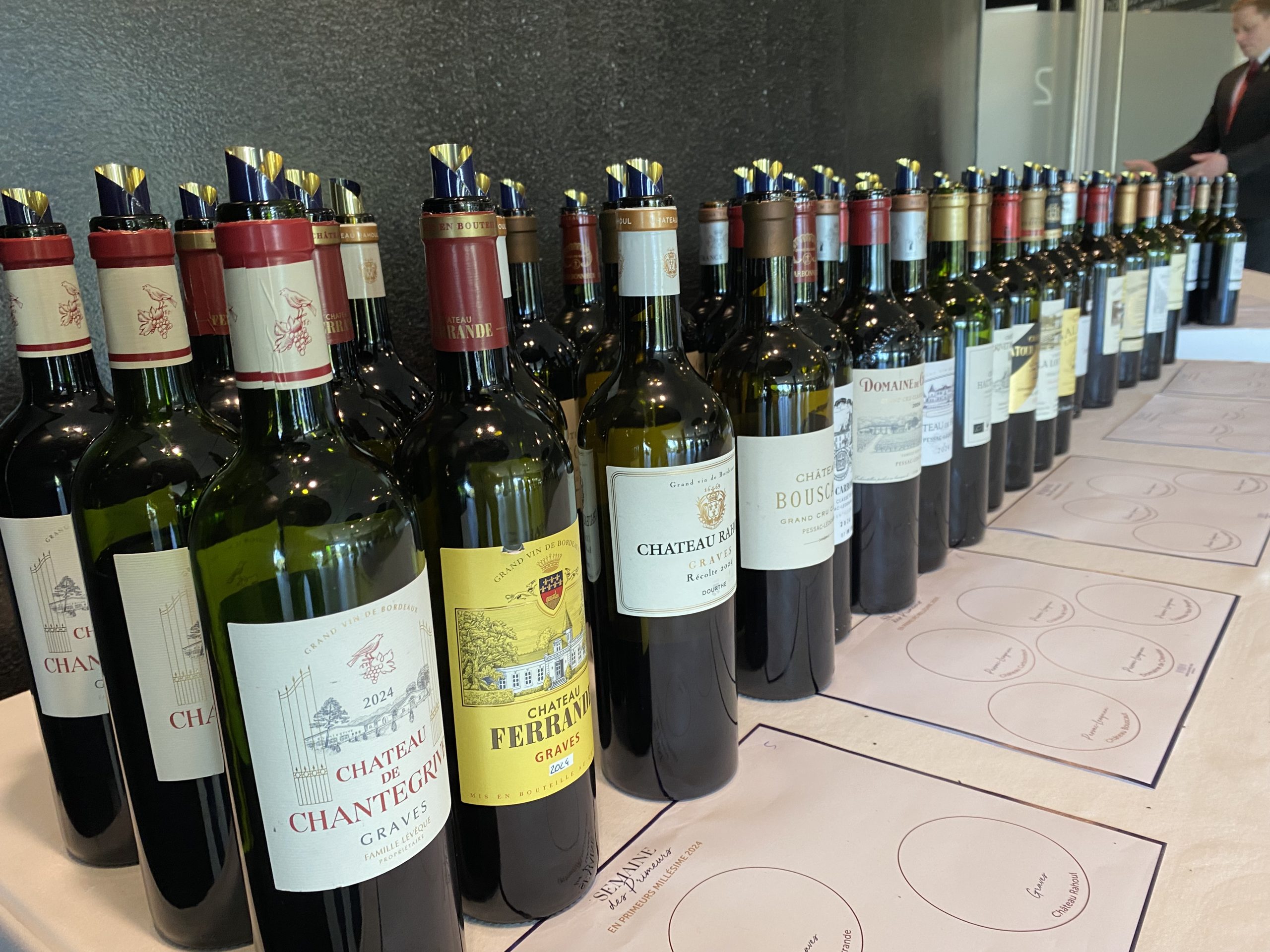
 I continue to provide an indicative rating for each wine alongside the published comment. All such comments and ratings are necessarily subjective. I would urge you to look at the two together and, if anything, to privilege the comment over the rating. My aim is more to describe the wine in the context of the vintage, the appellation and recent vintages of the same and similar wines, rather than to judge the wine per se.
The ratings, of course, reflect my subjective evaluations and relative preferences between wines. Your palate is likely differ from mine. I hope that my comments give you at least enough information to be able to recalibrate my ratings and, in so doing, to align them more closely to your own palate
2024, like both of its predecessors is, of course, a far from homogeneous vintage – and, consequently, my ratings span a considerable range (from the very top of the scale downwards). I see little interest, either for the consumer or the producer, in publishing very low scores. Consequently, I have decided not to publish scores for classed growths (or equivalent wines) that I have rated below 90 (here the range 89-91) and for crus bourgeois (or equivalent wines) that I have rated below 88 (here the range 87-89). Where no rating is published, the wine would have scored below these thresholds.
Finally, élevage is likely to be very important in determining the quality in bottle of these wines. I am no soothsayer and cannot predict how that will turn out (another reason for the use of banded ratings). But all en primeur ratings should be treated with caution and taken with a certain pinch of salt.
Detailed tasting notes (from over 50 wines tasted)
Château Bouscaut (Pessac-Léognan; 58% Merlot; 30% Cabernet Sauvignon; 12% Malbec; a final yield of 35 hl/ha; 13.5% alcohol; tasted twice, first with Sophie Lurton & Laurent Cogombles and then at the UGCB Press tasting at the Cité du Vin). A mix of red and darker berry fruits, with a little red cherry and plum, maybe a subtle hint of redcurrant too. There’s a natural sweetness to this on the attack that you don’t quite anticipate from the rather taciturn aromatics. Quite a narrow frame giving this more of a sense of impact. Quite linear too, but never strict. A hint of hazelnut and, with it, a certain creaminess. A touch of its signature iron minerality too. The tannins are fine-grained and this is well managed even if it doesn’t quite set my pulse racing. 90-92.
C de Carmes Haut-Brion (Pessac-Léognan; 62% Cabernet Sauvignon; 37% Merlot; 1% Petit Verdot; pH 3.55; aged in 25% new oak, 50% in vats of 30 hl and 11% in amphorae; whole bunch fermentation at 29%; 12.9% alcohol, with 0.6% of chaptalisation; tasted with Guillaume Pouthier at Les Carmes Haut-Brion). Very nutty, with a sense almost of peanut. Espresso coffee bean. The absence of coulure and millerandage allowed more whole bunch fermentation here in Martillac. Intense plum and dark berry fruits, really crunchy and fresh, radiantly sapid and juicy. The cassis is very noticeable. The amplitude on the attack increases the space that the rippling eddies of fresh fruit seek to fill. Blueberries too and brambles. Very pure, focussed and precise, with impressive density and intensity (reinforced by the whole-cluster fermentation). Very fine tannins that pinch and structure the wine, producing a gloriously lifted fantail finish. Really rises above the challenges of the vintage, with great harmony, balance and energy. 92-94.
Château Cantelys (Pessac-Léognan; from Daniel & Florence Cathiard). As with the white, the stylistic similarities with Smith are evident. Rich, bold and quite ample on the attack with a plush and plump, pulpy berry fruit, some wild sage and Italian herbs, a hint of coconut and a subtle touch of oak (but not too much). There’s an inkiness to this in the mid-palate that is rare and the freshness never threatens to become tart or astringent. Well-balanced if just a tad dry on the finish. 87-89.
Château Carbonnieux (Pessac-Léognan; 60% Cabernet Sauvignon; 30% Merlot; 5% Cabernet Franc; 5% Petit Verdot; a final yield of 40 hl/ha; 13% alcohol; tasted twice, first at the UGC press tasting at the Cité du Vin). Red and darker cherry and cherry stone notes, a little damson and bramble but really only after quite a bit of energetic swirling. A touch of cedar and graphite. This is one of the successes of the appellation and there is a sense here that the red as well as the white have been on a steep upward ascent, evident here. Soft tannins, quite a creamy mid-palate if nothing of the weight and density – nor complexity – of the 2020 or 2022. If I’m being picky, I’d like a little more shape in the mid-palate. 89-91.
I continue to provide an indicative rating for each wine alongside the published comment. All such comments and ratings are necessarily subjective. I would urge you to look at the two together and, if anything, to privilege the comment over the rating. My aim is more to describe the wine in the context of the vintage, the appellation and recent vintages of the same and similar wines, rather than to judge the wine per se.
The ratings, of course, reflect my subjective evaluations and relative preferences between wines. Your palate is likely differ from mine. I hope that my comments give you at least enough information to be able to recalibrate my ratings and, in so doing, to align them more closely to your own palate
2024, like both of its predecessors is, of course, a far from homogeneous vintage – and, consequently, my ratings span a considerable range (from the very top of the scale downwards). I see little interest, either for the consumer or the producer, in publishing very low scores. Consequently, I have decided not to publish scores for classed growths (or equivalent wines) that I have rated below 90 (here the range 89-91) and for crus bourgeois (or equivalent wines) that I have rated below 88 (here the range 87-89). Where no rating is published, the wine would have scored below these thresholds.
Finally, élevage is likely to be very important in determining the quality in bottle of these wines. I am no soothsayer and cannot predict how that will turn out (another reason for the use of banded ratings). But all en primeur ratings should be treated with caution and taken with a certain pinch of salt.
Detailed tasting notes (from over 50 wines tasted)
Château Bouscaut (Pessac-Léognan; 58% Merlot; 30% Cabernet Sauvignon; 12% Malbec; a final yield of 35 hl/ha; 13.5% alcohol; tasted twice, first with Sophie Lurton & Laurent Cogombles and then at the UGCB Press tasting at the Cité du Vin). A mix of red and darker berry fruits, with a little red cherry and plum, maybe a subtle hint of redcurrant too. There’s a natural sweetness to this on the attack that you don’t quite anticipate from the rather taciturn aromatics. Quite a narrow frame giving this more of a sense of impact. Quite linear too, but never strict. A hint of hazelnut and, with it, a certain creaminess. A touch of its signature iron minerality too. The tannins are fine-grained and this is well managed even if it doesn’t quite set my pulse racing. 90-92.
C de Carmes Haut-Brion (Pessac-Léognan; 62% Cabernet Sauvignon; 37% Merlot; 1% Petit Verdot; pH 3.55; aged in 25% new oak, 50% in vats of 30 hl and 11% in amphorae; whole bunch fermentation at 29%; 12.9% alcohol, with 0.6% of chaptalisation; tasted with Guillaume Pouthier at Les Carmes Haut-Brion). Very nutty, with a sense almost of peanut. Espresso coffee bean. The absence of coulure and millerandage allowed more whole bunch fermentation here in Martillac. Intense plum and dark berry fruits, really crunchy and fresh, radiantly sapid and juicy. The cassis is very noticeable. The amplitude on the attack increases the space that the rippling eddies of fresh fruit seek to fill. Blueberries too and brambles. Very pure, focussed and precise, with impressive density and intensity (reinforced by the whole-cluster fermentation). Very fine tannins that pinch and structure the wine, producing a gloriously lifted fantail finish. Really rises above the challenges of the vintage, with great harmony, balance and energy. 92-94.
Château Cantelys (Pessac-Léognan; from Daniel & Florence Cathiard). As with the white, the stylistic similarities with Smith are evident. Rich, bold and quite ample on the attack with a plush and plump, pulpy berry fruit, some wild sage and Italian herbs, a hint of coconut and a subtle touch of oak (but not too much). There’s an inkiness to this in the mid-palate that is rare and the freshness never threatens to become tart or astringent. Well-balanced if just a tad dry on the finish. 87-89.
Château Carbonnieux (Pessac-Léognan; 60% Cabernet Sauvignon; 30% Merlot; 5% Cabernet Franc; 5% Petit Verdot; a final yield of 40 hl/ha; 13% alcohol; tasted twice, first at the UGC press tasting at the Cité du Vin). Red and darker cherry and cherry stone notes, a little damson and bramble but really only after quite a bit of energetic swirling. A touch of cedar and graphite. This is one of the successes of the appellation and there is a sense here that the red as well as the white have been on a steep upward ascent, evident here. Soft tannins, quite a creamy mid-palate if nothing of the weight and density – nor complexity – of the 2020 or 2022. If I’m being picky, I’d like a little more shape in the mid-palate. 89-91.
 Château Carmes Haut-Brion (Pessac-Léognan; 48% Cabernet Franc (Bouchet) – 10% more than usual; 29% Cabernet Sauvignon; 23% Merlot; pH 3.61; aged in 70% new oak, 19% in vats of 30 hl and 25% in amphorae; whole bunch fermentation at 52%; a final yield of 24 hl/ha; 13.2% alcohol with no chaptalisation, picked at 13.9% and reduced with the whole bunch; tasted with Guillaume Pouthier at the property). I find this more like Cheval Blanc than ever before! The lowest ever proportion of Merlot in the final blend. A very long floraison of 3-4 weeks, with the biggest problem being the variation in the ripeness of the grapes within the bunches arising from coulure and millerandage. Densimetric sorting was crucial, with almost 40% of the harvested crop rejected (everything below 11.5% of potential alcohol). In the process a potential yield in the vineyard of 45 hl/ha was reduced at picking to 41 hl/ha, with just 24 hl/ha selected for vinification. The average age of vines is now 65 years. The density in the mid-palate is reinforced by the whole bunch fermentation. Instantly nutty. Walnuts and walnut oil. Iris. Peony. Peony bulb. Marjoram. Crushed and yet-to-be-crushed blueberries, a little black cherry too and that lovely authentic Cabernet Franc leafiness. That renders this very aerial but there is no mistaking the great gravitas and profundity too. This has a great vertical range which Guillaume Pouthier compares to a diamond shape in the mouth – though I find it less angular than that implies. Cedar and graphite, with more and more of the former with aeration. Saline, with even a touch of iodine. Succulent, intensely juicy and with a rare viscosity and density – this actually pushes the cheeks. The viscosity of the sapid finish produces almost the sensation of the transposing of the ‘tears’ in the glass to inside of one’s cheeks. Beautifully shaped and structured, lush and plush, plump and generous. Vintage transcendent and clearly the wine of the vintage in the appellation. 96-98.
Château Chantegrive (Graves; 58% Merlot; 40% Cabernet Sauvignon; 2% Petit Verdot; a final yield of 32 hl/ha; 13% alcohol; tasted twice, first at the UGC press tasting at the Cité du Vin). Quite floral. Rich and plump in the context of the vintage and impressively creamy. Nicely managed, this is not ample on the attack but not too strict either, the tannins reining in the plummy fruit and drawing it to the spine. Quite long with the tannins shading drier towards the finish. 87-89.
La Chapelle de la Misson Haut-Brion (Pessac-Léognan; 56.3% Cabernet Sauvignon; 29.2% Merlot; 14.5% Cabernet Franc; a final yield across the two estates of 26 hl/ha for the reds here; pH 3.67; c. 12.9% alcohol). Fragrant, quite leafy, with a touch of sweet spice. Soft, gentle and quite delicate with a lovely softness. Walnut oil from the ripe tannins. Densimetric, then optical and then visual sorting was crucial. Gracious, soft and refined, with very fine-grained tannins. Not the deepest, the richest or the most concentrated, but the product of excellent choices with a lovely resulting creaminess. 91-93.
Le Clarence de Haut-Brion (Pessac-Léognan; 45.7% Merlot; 32.3% Cabernet Sauvignon; 22% Cabernet Franc; a final yield across the two estates of 26 hl/ha for the reds here; pH 3.65; c. 13.1% alcohol). Darker fruited in a way than La Chapelle, perhaps a little creamier and glossier, more floral with blooms of hibiscus and a little pink rose petal too, more and more in fact with aeration. Ample, generous and gentle on the opening, almost pushing the cheeks and quite lush for the vintage in the mid-palate. Aerial and lifted, if without the full delineation and detail and complexity of Haut-Brion itself. Very attractive and with a lovely uplift of fresh darker berry fruit notes in the midst of the palate, like the fountain outside the tasting room. But a sense a touch of dryness on the finish. 91-93.
Le Comte de Malartic-Lagravière (Pessac-Léognan; 47% Merlot; 40% Cabernet Sauvignon; 13% Petit Verdot; a final yield of 19hl/ha; pH 3.54; 12.5% alcohol; Eric Boissenot is the consultant; tasted at the property). The Merlot was depleted by mildew. Nicely done and very much in the style of Malartic. Dark berry fruited with a little damson as well. Wild rosemary. Fresh and plump, no great length with but lovely soft tannins. More red-berried on the finish – cranberries and redcurrant. Juicy and sapid. Nice tension but not too much acidity. 89-91.
Château Couhins (Pessac-Léognan; 60% Cabernet Sauvignon; 40% Merlot; from 23 hectares on gravel-rich hilltop over a clay subsoil; a final yield of 37 ha/hl; 12.5% alcohol; certified organic; tasted twice). Aromatically this is very Pessac – in fact, Léognan – with a waft of smoke alongside that delightful wild herbal notes, a hint of charcuterie and quite a rich, dark stone and berry fruit. The minerality is evident too. Fine and quite soft and succulent for the vintage with a more gracious flow over the palate than many of its ostensible peers, the acidity well integrated. Bright and crunchy but never severe. Nice grippy tannins release a wave of sapidity on the finish. 91-93+.
Château Carmes Haut-Brion (Pessac-Léognan; 48% Cabernet Franc (Bouchet) – 10% more than usual; 29% Cabernet Sauvignon; 23% Merlot; pH 3.61; aged in 70% new oak, 19% in vats of 30 hl and 25% in amphorae; whole bunch fermentation at 52%; a final yield of 24 hl/ha; 13.2% alcohol with no chaptalisation, picked at 13.9% and reduced with the whole bunch; tasted with Guillaume Pouthier at the property). I find this more like Cheval Blanc than ever before! The lowest ever proportion of Merlot in the final blend. A very long floraison of 3-4 weeks, with the biggest problem being the variation in the ripeness of the grapes within the bunches arising from coulure and millerandage. Densimetric sorting was crucial, with almost 40% of the harvested crop rejected (everything below 11.5% of potential alcohol). In the process a potential yield in the vineyard of 45 hl/ha was reduced at picking to 41 hl/ha, with just 24 hl/ha selected for vinification. The average age of vines is now 65 years. The density in the mid-palate is reinforced by the whole bunch fermentation. Instantly nutty. Walnuts and walnut oil. Iris. Peony. Peony bulb. Marjoram. Crushed and yet-to-be-crushed blueberries, a little black cherry too and that lovely authentic Cabernet Franc leafiness. That renders this very aerial but there is no mistaking the great gravitas and profundity too. This has a great vertical range which Guillaume Pouthier compares to a diamond shape in the mouth – though I find it less angular than that implies. Cedar and graphite, with more and more of the former with aeration. Saline, with even a touch of iodine. Succulent, intensely juicy and with a rare viscosity and density – this actually pushes the cheeks. The viscosity of the sapid finish produces almost the sensation of the transposing of the ‘tears’ in the glass to inside of one’s cheeks. Beautifully shaped and structured, lush and plush, plump and generous. Vintage transcendent and clearly the wine of the vintage in the appellation. 96-98.
Château Chantegrive (Graves; 58% Merlot; 40% Cabernet Sauvignon; 2% Petit Verdot; a final yield of 32 hl/ha; 13% alcohol; tasted twice, first at the UGC press tasting at the Cité du Vin). Quite floral. Rich and plump in the context of the vintage and impressively creamy. Nicely managed, this is not ample on the attack but not too strict either, the tannins reining in the plummy fruit and drawing it to the spine. Quite long with the tannins shading drier towards the finish. 87-89.
La Chapelle de la Misson Haut-Brion (Pessac-Léognan; 56.3% Cabernet Sauvignon; 29.2% Merlot; 14.5% Cabernet Franc; a final yield across the two estates of 26 hl/ha for the reds here; pH 3.67; c. 12.9% alcohol). Fragrant, quite leafy, with a touch of sweet spice. Soft, gentle and quite delicate with a lovely softness. Walnut oil from the ripe tannins. Densimetric, then optical and then visual sorting was crucial. Gracious, soft and refined, with very fine-grained tannins. Not the deepest, the richest or the most concentrated, but the product of excellent choices with a lovely resulting creaminess. 91-93.
Le Clarence de Haut-Brion (Pessac-Léognan; 45.7% Merlot; 32.3% Cabernet Sauvignon; 22% Cabernet Franc; a final yield across the two estates of 26 hl/ha for the reds here; pH 3.65; c. 13.1% alcohol). Darker fruited in a way than La Chapelle, perhaps a little creamier and glossier, more floral with blooms of hibiscus and a little pink rose petal too, more and more in fact with aeration. Ample, generous and gentle on the opening, almost pushing the cheeks and quite lush for the vintage in the mid-palate. Aerial and lifted, if without the full delineation and detail and complexity of Haut-Brion itself. Very attractive and with a lovely uplift of fresh darker berry fruit notes in the midst of the palate, like the fountain outside the tasting room. But a sense a touch of dryness on the finish. 91-93.
Le Comte de Malartic-Lagravière (Pessac-Léognan; 47% Merlot; 40% Cabernet Sauvignon; 13% Petit Verdot; a final yield of 19hl/ha; pH 3.54; 12.5% alcohol; Eric Boissenot is the consultant; tasted at the property). The Merlot was depleted by mildew. Nicely done and very much in the style of Malartic. Dark berry fruited with a little damson as well. Wild rosemary. Fresh and plump, no great length with but lovely soft tannins. More red-berried on the finish – cranberries and redcurrant. Juicy and sapid. Nice tension but not too much acidity. 89-91.
Château Couhins (Pessac-Léognan; 60% Cabernet Sauvignon; 40% Merlot; from 23 hectares on gravel-rich hilltop over a clay subsoil; a final yield of 37 ha/hl; 12.5% alcohol; certified organic; tasted twice). Aromatically this is very Pessac – in fact, Léognan – with a waft of smoke alongside that delightful wild herbal notes, a hint of charcuterie and quite a rich, dark stone and berry fruit. The minerality is evident too. Fine and quite soft and succulent for the vintage with a more gracious flow over the palate than many of its ostensible peers, the acidity well integrated. Bright and crunchy but never severe. Nice grippy tannins release a wave of sapidity on the finish. 91-93+.
 Château Couhins Lurton (Pessac-Léognan; 85% Merlot; 15% Cabernet Sauvignon; 13.5% alcohol; a final yield of 47 ha/ha; Eric Boissenot is the consultant; tasted twice, the first time at La Louvière). Creamy but tense. Very Merlot and very pure in its fruit profile – cassis and redcurrant with the tension that the latter implies; red cherries too. More cassis comes through in the mouth. Lovely purity. Fresh and tense. A very present backbone. Very fresh on the finish but that together with the tannic grip underscore the purity of the fruit. Grape skins right at the end. Impressive and almost a little Margellais in that it’s very floral for Pessac, with delicate spring flowers. Never strict, unlike many, this has been well-achieved. 92-94.
Domaine de Chevalier (Pessac-Léognan; 65% Cabernet Sauvignon; 30% Merlot; 5% Petit Verdot; an impressive final yield of 48 hl/ha; 12.5% alcohol, with 0.3 degrees of chaptalisation; tasted twice, first the UGC press tasting at the Cité du Vin). A lovely relaxed aromatic presence – lots of cedar, a touch of graphite and pencil shavings, damson, dark berry fruits and a little black cherry. I love the little floral note too – difficult to pinpoint, but it’s there. Peony is the closest, maybe lily of the valley too. There’s a characteristic glossiness to this that is oh so Domaine de Chevalier. Not the density of recent vintages, but a certain sense of poise and elegance. Nutty notes on the finish indicating ripe pips. 92-94+.
Château Ferrande (Graves; 45% Cabernet Sauvignon; 55% Merlot; pH 3.67; 13% alcohol; tasted twice, first at the UGC press tasting at the Cité du Vin; Thomas Duclos is the consultant here; certified organic). More lifted aromatically than de Chategrive, less relaxed, more taut and more herbal too. Less creamy. Red and darker berries, cherries and sandalwood. A little oaky when re-tasted but with a nice crystallinity. Rather stern on the attack, but there is a pulpiness to the fruit that I rather like and even a hint of graphite in the midst of the mid-palate. Quite glossy and shapely. A success in the context of the vintage. 88-90.
Château de Fieuzal (Pessac-Léognan; 45% Merlot; 40% Cabernet Sauvignon; 15% Petit Verdot; a final yield of 29 ha/ha; 12.95% alcohol; Thomas Duclos has been the consultant here for the last 5 years; tasted twice, first with Stephen Carrier at the property). The character of the vintage is very much more obvious on the palate than aromatically – with the nose rather more sunny and solaire, a pleasing contrast to many. Hyper-expressive and with that lovely very pure, precise, freshly crushed ripe red berry fruit – raspberry and loganberry. Sandalwood, a de Fieuzal signature. Blood orange, above all with aeration. Fennel seed. A little hint of redcurrant and a little blueberry too. Very lithe and ethereal. Aerial on the palate. Glassy. Crystalline. There’s a touch of graphite and even cedar – rare in the vintage – with aeration. This is very refined and quite Burgundian in a way. Elegant and pure. It maybe lacks a little of the complexity of the 2 previous vintages, but it fills out as the wine inhales and this was tasted first only a week after the assemblage. Very mineral and quite saline on the finish. 92-94.
Clos Floridène (Graves; 60% Cabernet Sauvignon; 40% Merlot; 13% alcohol). Quite plush, soft and gentle, yet ample and generous – much like the white in fact in its form in the mouth. There’s impressive detail and precision and some layering, but no great terroir complexity to reveal. But this very fine for the likely price-point and it shows an excellent management of the vintage. 87-89.
Château de France (Pessac-Léognan; 50% Merlot; 50% Cabernet Sauvignon; a final yield of 42 hl/ha; 13% alcohol; tasted twice, first at the UGC press tasting at the Cité du Vin). Very red-berry fruited – strikingly different in that respect from the others in the UGC line-up – with leafy redcurrant, cranberry and even pink gooseberry notes. That makes this sound tarter than it is – for it’s actually sweeter on the palate than that implies. Supple and subtle, but quite energetic and dynamic. Fresh but never tart nor astringent nor dry. Distinctive. I rather like this. A property on an upwards track. 89-91.
Château La Garde (Pessac-Léognan; 55% Cabernet Sauvignon; 45% Merlot; a little more press wine than it used to have; Axel Marchal is the consultant here). Pure. Croquant. Bright red and darker berry fruits. Glassy and very fine in its purity and clarity. Layers of silk. Lots of cassis. This is nicely handled and gains in quality with each year. It expresses the vintage just as it deals with its challenges very well. 90-92.
Château Haura (Pessac-Léognan; 60% Cabernet Sauvignon; 40% Merlot; 13% alcohol). Naturally sweeter, rich and more plush and plump than Clos Floridène this once again impresses. Bright, fresh, crisp and crunchy red and darker berry fruits, a little hint of heather and moorland flowers. There’s a waft of oak smoke and tabac and a hint of newly scratched leather, also a more ferrous bloody meaty element. Very Graves. Very good in the context of the vintage too. 89-91.
Château Haut-Bailly (Pessac-Léognan; 58% Cabernet Sauvignon; 40% Merlot; 2% Cabernet Franc; a final yield of 30 hl/ha; pH 3.65; aged in 50% new oak; 13% alcohol; around half of the total production; tasted with Veronique Sanders at the property). There were no problems of coulure and millerandage here. Sandalwood, graphite, a hint of cedar, plump and plush dark berry and damson fruit. A little pink and green peppercorn. Subtle wild floral notes – small spring flowers. Sage and sprigs of thyme. So soft and gentle on the entry, hyper-layered a little like Don Giovanni’s list of conquests – each time you get to the bottom you find another line, another layer! Super refined, ultra-elegant and transcendent of the challenges we associate with the vintage. A very subtle note of red liquorice. So fine and gentle, so lithe and poised. A very great success. A lovely evolution in the glass too as the cedar starts to emerge. It’s actually very classical. 94-96.
Haut-Bailly II (Pessac-Léognan; 45% Cabernet Sauvignon; 45% Merlot; 8% Petit Verdot; 2% Cabernet Franc; pH 64; 13% alcohol; around 30% of the total production; tasted with Veronique Sanders at the property). A lovely gentle and very natural sweetness here. Plums and a mix of red and darker berry fruits. Almost a touch of confit strawberry. Cranberry. Sandalwood. A nice touch of Haut Bailly graphite. Glossy on the entry with lovely fine-grained tannins, the acidity very well integrated. Plush in the mouth and a good introducton to the grand vin. This shows how good the second wines can be. I love the very fine-grained but tactile tannins on the finish. 91-93.
Château Haut-Bergey (Pessac-Léognan; 51% Cabernet Sauvignon; 38% Merlot; 8% Cabernet Franc; 3% Petit Verdot; 13% alcohol). True to its identity, this is one of the most iron-rich aromatically. Dark stone and berry fruits, a sprig of heather and some wild herbal elements. Supple, juicy tannins and quite a succulent mid-palate but one marked its acidity. It’s never quite tart or astringent but it’s quite close to traversing that fine line. A little dry on the finish. 88-90.
Château Haut-Brion (Pessac-Léognan; 47.2% Cabernet Sauvignon; 37.5% Merlot; 15.3% Cabernet Franc; a final yield across the two estates of 26 hl/ha for the reds here; pH 3.70; c. 13.2% alcohol; 1.7% press wine). Delicate, again, and intensely floral – with ethereal, subtle but sustained and ultimately quite intense violet and fresh rose petal notes enrobing the soft, plush and plump cherry and dark berry fruits. Ample, again, much like La Mission on the attack with, again, a broad frame. At first one does not notice the tannins, but they become more and more of a presence, descending as if vertically like fine beads of shower spray, pixilating the wine. Not quite the complexity of the greatest vintages from here, accentuated in a way by the ample frame. The élévage will be very important. 93-95.
Les Hauts de Smith (Pessac-Léognan; 40% Cabernet Sauvignon; 60% Merlot; 30% new oak). Again, quite creamy and glossy, one senses the dominance of the Merlot here. A little frangipane and white almond. A touch of oregano. On the palate, lots of liquorice. Plums and dark berry fruits though certainly in comparison with Le Petit and Smith itself they are a little blitzed. A hint but only that of cedar. Fine, but one feels a little the consequences of the strict selection for the grand vin. 88-90.
Château Larrivet Haut-Brion (Pessac-Léognan; 62% Cabernet Sauvignon; 25% Merlot; 13% Cabernet Franc; 13% alcohol; tasted twice, first at the UGC press tasting at the Cité du Vin). Lovely dark berry and fruits of the forest aromatics, with a sprig or two of sage, marjoram and rosemary. A lovely very pure cassis fruit. Intense on the attack, an impression reinforced by the relatively narrow frame. I love the cedar that seems to rush through the middle as if conveyed through the central spine of the wine. Chewy, fresh and with a hint of menthol lift on the finish. Perhaps the juiciest of the Pessacs in the UGC line-up. There are excellent things going on at Larrivet Haut-Brion these days – this vintage is the product of many of them. 92-94.
Château Latour Martillac (Pessac-Léognan; 59% Cabernet Sauvignon; 28% Merlot; 3% Petit Verdot; a final yield of 42 hl/ha; 13% alcohol). Dark wild berry fruits – mulberry, bramble and a little black berry. A hint of apple skin too. A baked clay earthiness too and a little thyme. A hint of cedar too. Soft, gentle on the attack and more ample than most. Cool in the mid-palate with ripe and fine-grained tannins and a certain sinuous, succulent and sapid quality in the mouth. Refreshing on the finish, with a pleasing note of walnut and walnut oil. Nicely achieved. 92-94.
Château Lespault-Martillac (Pessac-Léognan; 65% Merlot; 30% Cabernet Sauvignon; 5% Petit Verdot; pH 3.63; a final yield of 50 hl/ha; 12.8% alcohol). Plump, plush, and classically Martillac, this is smoky, rich and deep, nicely layered and with a profound dark berry and stone fruit. A lovely creamy texture. Ripe, fine-grained tannins even shape a little plume on the finish. Nicely done and with decent density and concentration for the vintage. There’s nothing dry about it either. 89-91.
Château La Louvière (Pessac-Léognan; 17 Sept - 3 Oct; yield of 40 ha/ha; 65% Merlot; 35% Cabernet Sauvignon; 40% new oak; 13% alcohol; tasted twice, first at the property and then at the UGC press tasting at the Cité du Vin). Rich in the context of the vintage. Soft and succulent too. Crushed berry fruits – red and darker - and a veritable bunch of freshly picked wild herbs. Raspberry, mulberry and loganberry. With aeration, more dark cherry notes – but all very fresh. A touch of cassis too. Quite traditional but with very gracious tannins. A little white almond. Creamy on the attack. Cool at the core and nicely structured – more and more sapid with a pleasing sense of grip from the fine grained but granular tannins. Long and tapered. A success. 91-93.
Château Malartic-Lagravière (Pessac-Léognan; 84% Cabernet Sauvignon – highest level ever here; 12% Merlot; 4% Cabernet Franc; a final yield of 19hl/ha due to mildew losses above all on the Merlot; pH 3.69; 12.5% alcohol; Eric Boissenot is the consultant 12.5% alcohol; tasted twice, first at the property and then at the UGC press tasting at the Cité du Vin). Sandalwood, white almond, almost a hint of horse hair and assorted croquant red and darker berries, a little plum skin too and, with aeration, graphite and a touch of acacia. Damson, redcurrant and mulberry. Lovely cassis appears on the attack – it builds in and through the mid-palate. When first tasted it seemed to tone in and tone out as one comes back to it, as if it’s just a little reluctant to show all that it has; a little more consistent when tasted at the UGC press tasting. The elevated Cabernet works here rather beautifully. Sapid and juicy, energetic and vibrant, this is a good result, but it does lose a bit of shape in the mid-palate which it never quite regains. A touch of dryness on the finish. 91-93+.
Clos Marsalette (Pessac-Léognan; 40% Merlot; 58% Cabernet Sauvignon; 2% Cabernet Franc; a final yield of 47 hl/ha; 12.5% alcohol; certified organic; tasted at Canon-La-Gaffelière with Stephan and Ludovic von Neipperg). Lovely dark berry fruits. Very pure and precise and lifted too. Wild herbal notes. This feels natural and almost wild as is often case here. A touch of blackcurrant, a little cherry, all bright and crunchy. Fresh and pure over quite an ample frame. Chewy tannins but very finely-grained. Delicate and sapid on the finish. Very juicy. Lovely. Easy and likely to be accessible in its youth. 90-92.
Château La Mission Haut-Brion (Pessac-Léognan; 51% Cabernet Sauvignon; 46.5% Merlot; 2.5% Cabernet Franc; a final yield across the two estates of 26 hl/ha for the reds here; pH 3.65; c. 13.2% alcohol; 5.3% press wine). Cool, rather intimate and introvert – that sensation of entering the dark crypt with the residual aromatics of the mass previously performed, above all a hint of myrrh, also candlewax and the plume of smoke from the snuffed candleflame. Iris. Dark berries and cherries, a touch of wild herbs, a little hint of nutmeg freshly grated. Plump, plush, full, broad-shouldered yet with no brutal corners, this is gracious, delicately textured and extraordinarily fine-grained in its tannic profile. The cedar notes are there but very subtly so – just waiting to push through and enrobe all with time in the bottle. A cool focussed precision. Very classical, very harmonious if perhaps not the depth or concentration of the very top vintages. Ethereal nonetheless. 93-95+.
Château Olivier (Pessac-Léognan; 49% Cabernet Sauvignon; 46% Merlot; 5% Petit Verdot; a final yield of 40 hl/ha; 13% alcohol; tasted twice, first at the UGC press tasting). Aromatically very mineral – crushed rocks and a distinctly ferrous note, but then the cherry, stone and berry fruits rush through, a little cedar too. Tight and taut on the attack. But this is another wine that loses a little bit of the shape suggested on the attack in the mid-palate, the fruit delivery just a little un-delineated. 87-89.
Château Pape Clément (Pessac-Léognan; 53% Cabernet Sauvignon; 45% Merlot; 1% Cabernet Franc; 1% Petit Verdot; a final yield of 42 hl/ha; 13% alcohol; tasted twice, the second time at the UGC press tasting at the Cité du Vin). Intense, deeply dark fruited – with a very Pessac combination of plums, damson and dark berry fruits. A nice floral note too – iris above all. Walnut shell, flesh and skin, a little hint of boudin noir and a waft of oak smoke. This is a stylish and eloquent Pape Clément, as always, but one that seems to take its script from its terroir more than ever. More succulent still at the UGC tasting and I up my note. The oak, often evident at this stage, is beautifully and seamlessly integrated and this is an impressively meaty and substantial wine with grainy, grippy tannins that sculpt a long and tapering finish. 93-95.
Le Petit Smith Haut-Lafitte (Pessac-Léognan; 60% Cabernet Sauvignon; 40% Merlot; 30% new oak; a final yield of 21 hl/ha; tasted at the property). This has a lovely Cabernet signature – with a certain fresh, almost stalky, leafiness. Cassis, blackcurrant and blackberry. Croquant and à point. There’s a nice grip from the tannins releasing a little wave of sapidity that forms the lifted finish. Liquorice and salt. A little spice adds further interest. Impressively classic given the derisory yields. 90-92+.
Château Picque Caillou (Pessac-Léognan; 65% Cabernet Sauvignon; 25% Merlot; 10% Petit Verdot; a final yield of 44 hl/ha; 13% alcohol; tasted twice, first at the UGC press tasting at the Cité du Vin). Sumptuous and succulent both for Picque Caillou and for the vintage. Very intense aromatically in its dark berry fruitiness. A lovely damson stone note too and plenty of graphite. Cassis, too, with aeration. Creamy and glossy, if a little lacking in delineation in the mid-palate where it becomes rather monotone. But there is no astringency nor dryness and this has a pleasing balance to it. Likely to prove excellent value. 90-92.
Château Smith Haut-Lafitte (Pessac-Léognan; 67% Cabernet Sauvignon; 27% Merlot; 5% Cabernet Franc; 1% Petit Verdot; 60% new oak; a final yield of 21 hl/ha; tasted first with Fabien Teitgen at the property and then at the UGC press tasting at the Cité du Vin). Lovely aromatics. Demonstratively Cabernet. Cassis, cedar, that stalky leafiness of all Sauvignon varietals at their best, a little bulby florality too – joined by copious bunches of freshly picked flowers at the UGC press tasting. Black cherry. Blackcurrant. A little black berry, all al dente. This feels very ripe and rather special (the selection of the fruit again crucial). One senses from the aromatics already the succulence to be found in the mouth and the svelte tannins – more 2020 than 2024! There’s a little spice from the oak, but more delicate at this stage than usual. Gracious but quite ample on the attack, if of course rather less so than 2022 or 2023. The acidity and the tannins work together a little like a St Emilion from the calcaire plateau St Emilion in layering this (with the Merlot of course planted here on argilo-calcaire soils), with the tannins like glass beads interspersed between the layers. Fresh and mentholated on the finish, again, like Le Petit Smith, but with more of a fantail still. Impressive. I love the crumbly tannins on the juicy finish. 93-95.
Le Thil (Pessac-Léognan; 94% Merlot; 6% Cabernet Franc; a final yield of 21 hl/ha, with the losses almost entirely from mildew rather than any problems during floraison). Glossy. Limpid. Nice graphite notes, a hint of walnut and walnut oil. Fresh. The acidity is a little elevated. But there’s a pleasing harmony to this and the tannins are well-managed and very fine grained. A touch of liquorice at the end (a grating perhaps, not a whole stick!). 88-90.
Villa Bel-Air (Graves; 52.5% Cabernet Sauvignon; 44% Merlot; 3.5% Cabernet Franc; 12.5% alcohol). This is really nicely done. It expresses the vintage very well, retaining levity, energy and brightness without ever succumbing to tartness or astringency. There’s even a little creaminess. Crucially, there’s no dryness on the finish and this expresses its terroir and appellation very well with a subtle meatiness, a hint of oak smoke and plenty of dark stone and berry fruits. 88-90.
For full appellation-by-appellation reviews, see here: St-Estèphe, Pauillac, Saint-Julien, Margaux, Haut-Médoc, Listrac-Médoc, Médoc, & Moulis-en-Médoc, Pomerol, Saint-Émilion, ‘satellite’ appellations of Saint-Émilion (Lussac, Montagne & St Georges), Pessac-Léognan & Graves rouge, Pessac-Léognan & Graves white and Sauternes.
Château Couhins Lurton (Pessac-Léognan; 85% Merlot; 15% Cabernet Sauvignon; 13.5% alcohol; a final yield of 47 ha/ha; Eric Boissenot is the consultant; tasted twice, the first time at La Louvière). Creamy but tense. Very Merlot and very pure in its fruit profile – cassis and redcurrant with the tension that the latter implies; red cherries too. More cassis comes through in the mouth. Lovely purity. Fresh and tense. A very present backbone. Very fresh on the finish but that together with the tannic grip underscore the purity of the fruit. Grape skins right at the end. Impressive and almost a little Margellais in that it’s very floral for Pessac, with delicate spring flowers. Never strict, unlike many, this has been well-achieved. 92-94.
Domaine de Chevalier (Pessac-Léognan; 65% Cabernet Sauvignon; 30% Merlot; 5% Petit Verdot; an impressive final yield of 48 hl/ha; 12.5% alcohol, with 0.3 degrees of chaptalisation; tasted twice, first the UGC press tasting at the Cité du Vin). A lovely relaxed aromatic presence – lots of cedar, a touch of graphite and pencil shavings, damson, dark berry fruits and a little black cherry. I love the little floral note too – difficult to pinpoint, but it’s there. Peony is the closest, maybe lily of the valley too. There’s a characteristic glossiness to this that is oh so Domaine de Chevalier. Not the density of recent vintages, but a certain sense of poise and elegance. Nutty notes on the finish indicating ripe pips. 92-94+.
Château Ferrande (Graves; 45% Cabernet Sauvignon; 55% Merlot; pH 3.67; 13% alcohol; tasted twice, first at the UGC press tasting at the Cité du Vin; Thomas Duclos is the consultant here; certified organic). More lifted aromatically than de Chategrive, less relaxed, more taut and more herbal too. Less creamy. Red and darker berries, cherries and sandalwood. A little oaky when re-tasted but with a nice crystallinity. Rather stern on the attack, but there is a pulpiness to the fruit that I rather like and even a hint of graphite in the midst of the mid-palate. Quite glossy and shapely. A success in the context of the vintage. 88-90.
Château de Fieuzal (Pessac-Léognan; 45% Merlot; 40% Cabernet Sauvignon; 15% Petit Verdot; a final yield of 29 ha/ha; 12.95% alcohol; Thomas Duclos has been the consultant here for the last 5 years; tasted twice, first with Stephen Carrier at the property). The character of the vintage is very much more obvious on the palate than aromatically – with the nose rather more sunny and solaire, a pleasing contrast to many. Hyper-expressive and with that lovely very pure, precise, freshly crushed ripe red berry fruit – raspberry and loganberry. Sandalwood, a de Fieuzal signature. Blood orange, above all with aeration. Fennel seed. A little hint of redcurrant and a little blueberry too. Very lithe and ethereal. Aerial on the palate. Glassy. Crystalline. There’s a touch of graphite and even cedar – rare in the vintage – with aeration. This is very refined and quite Burgundian in a way. Elegant and pure. It maybe lacks a little of the complexity of the 2 previous vintages, but it fills out as the wine inhales and this was tasted first only a week after the assemblage. Very mineral and quite saline on the finish. 92-94.
Clos Floridène (Graves; 60% Cabernet Sauvignon; 40% Merlot; 13% alcohol). Quite plush, soft and gentle, yet ample and generous – much like the white in fact in its form in the mouth. There’s impressive detail and precision and some layering, but no great terroir complexity to reveal. But this very fine for the likely price-point and it shows an excellent management of the vintage. 87-89.
Château de France (Pessac-Léognan; 50% Merlot; 50% Cabernet Sauvignon; a final yield of 42 hl/ha; 13% alcohol; tasted twice, first at the UGC press tasting at the Cité du Vin). Very red-berry fruited – strikingly different in that respect from the others in the UGC line-up – with leafy redcurrant, cranberry and even pink gooseberry notes. That makes this sound tarter than it is – for it’s actually sweeter on the palate than that implies. Supple and subtle, but quite energetic and dynamic. Fresh but never tart nor astringent nor dry. Distinctive. I rather like this. A property on an upwards track. 89-91.
Château La Garde (Pessac-Léognan; 55% Cabernet Sauvignon; 45% Merlot; a little more press wine than it used to have; Axel Marchal is the consultant here). Pure. Croquant. Bright red and darker berry fruits. Glassy and very fine in its purity and clarity. Layers of silk. Lots of cassis. This is nicely handled and gains in quality with each year. It expresses the vintage just as it deals with its challenges very well. 90-92.
Château Haura (Pessac-Léognan; 60% Cabernet Sauvignon; 40% Merlot; 13% alcohol). Naturally sweeter, rich and more plush and plump than Clos Floridène this once again impresses. Bright, fresh, crisp and crunchy red and darker berry fruits, a little hint of heather and moorland flowers. There’s a waft of oak smoke and tabac and a hint of newly scratched leather, also a more ferrous bloody meaty element. Very Graves. Very good in the context of the vintage too. 89-91.
Château Haut-Bailly (Pessac-Léognan; 58% Cabernet Sauvignon; 40% Merlot; 2% Cabernet Franc; a final yield of 30 hl/ha; pH 3.65; aged in 50% new oak; 13% alcohol; around half of the total production; tasted with Veronique Sanders at the property). There were no problems of coulure and millerandage here. Sandalwood, graphite, a hint of cedar, plump and plush dark berry and damson fruit. A little pink and green peppercorn. Subtle wild floral notes – small spring flowers. Sage and sprigs of thyme. So soft and gentle on the entry, hyper-layered a little like Don Giovanni’s list of conquests – each time you get to the bottom you find another line, another layer! Super refined, ultra-elegant and transcendent of the challenges we associate with the vintage. A very subtle note of red liquorice. So fine and gentle, so lithe and poised. A very great success. A lovely evolution in the glass too as the cedar starts to emerge. It’s actually very classical. 94-96.
Haut-Bailly II (Pessac-Léognan; 45% Cabernet Sauvignon; 45% Merlot; 8% Petit Verdot; 2% Cabernet Franc; pH 64; 13% alcohol; around 30% of the total production; tasted with Veronique Sanders at the property). A lovely gentle and very natural sweetness here. Plums and a mix of red and darker berry fruits. Almost a touch of confit strawberry. Cranberry. Sandalwood. A nice touch of Haut Bailly graphite. Glossy on the entry with lovely fine-grained tannins, the acidity very well integrated. Plush in the mouth and a good introducton to the grand vin. This shows how good the second wines can be. I love the very fine-grained but tactile tannins on the finish. 91-93.
Château Haut-Bergey (Pessac-Léognan; 51% Cabernet Sauvignon; 38% Merlot; 8% Cabernet Franc; 3% Petit Verdot; 13% alcohol). True to its identity, this is one of the most iron-rich aromatically. Dark stone and berry fruits, a sprig of heather and some wild herbal elements. Supple, juicy tannins and quite a succulent mid-palate but one marked its acidity. It’s never quite tart or astringent but it’s quite close to traversing that fine line. A little dry on the finish. 88-90.
Château Haut-Brion (Pessac-Léognan; 47.2% Cabernet Sauvignon; 37.5% Merlot; 15.3% Cabernet Franc; a final yield across the two estates of 26 hl/ha for the reds here; pH 3.70; c. 13.2% alcohol; 1.7% press wine). Delicate, again, and intensely floral – with ethereal, subtle but sustained and ultimately quite intense violet and fresh rose petal notes enrobing the soft, plush and plump cherry and dark berry fruits. Ample, again, much like La Mission on the attack with, again, a broad frame. At first one does not notice the tannins, but they become more and more of a presence, descending as if vertically like fine beads of shower spray, pixilating the wine. Not quite the complexity of the greatest vintages from here, accentuated in a way by the ample frame. The élévage will be very important. 93-95.
Les Hauts de Smith (Pessac-Léognan; 40% Cabernet Sauvignon; 60% Merlot; 30% new oak). Again, quite creamy and glossy, one senses the dominance of the Merlot here. A little frangipane and white almond. A touch of oregano. On the palate, lots of liquorice. Plums and dark berry fruits though certainly in comparison with Le Petit and Smith itself they are a little blitzed. A hint but only that of cedar. Fine, but one feels a little the consequences of the strict selection for the grand vin. 88-90.
Château Larrivet Haut-Brion (Pessac-Léognan; 62% Cabernet Sauvignon; 25% Merlot; 13% Cabernet Franc; 13% alcohol; tasted twice, first at the UGC press tasting at the Cité du Vin). Lovely dark berry and fruits of the forest aromatics, with a sprig or two of sage, marjoram and rosemary. A lovely very pure cassis fruit. Intense on the attack, an impression reinforced by the relatively narrow frame. I love the cedar that seems to rush through the middle as if conveyed through the central spine of the wine. Chewy, fresh and with a hint of menthol lift on the finish. Perhaps the juiciest of the Pessacs in the UGC line-up. There are excellent things going on at Larrivet Haut-Brion these days – this vintage is the product of many of them. 92-94.
Château Latour Martillac (Pessac-Léognan; 59% Cabernet Sauvignon; 28% Merlot; 3% Petit Verdot; a final yield of 42 hl/ha; 13% alcohol). Dark wild berry fruits – mulberry, bramble and a little black berry. A hint of apple skin too. A baked clay earthiness too and a little thyme. A hint of cedar too. Soft, gentle on the attack and more ample than most. Cool in the mid-palate with ripe and fine-grained tannins and a certain sinuous, succulent and sapid quality in the mouth. Refreshing on the finish, with a pleasing note of walnut and walnut oil. Nicely achieved. 92-94.
Château Lespault-Martillac (Pessac-Léognan; 65% Merlot; 30% Cabernet Sauvignon; 5% Petit Verdot; pH 3.63; a final yield of 50 hl/ha; 12.8% alcohol). Plump, plush, and classically Martillac, this is smoky, rich and deep, nicely layered and with a profound dark berry and stone fruit. A lovely creamy texture. Ripe, fine-grained tannins even shape a little plume on the finish. Nicely done and with decent density and concentration for the vintage. There’s nothing dry about it either. 89-91.
Château La Louvière (Pessac-Léognan; 17 Sept - 3 Oct; yield of 40 ha/ha; 65% Merlot; 35% Cabernet Sauvignon; 40% new oak; 13% alcohol; tasted twice, first at the property and then at the UGC press tasting at the Cité du Vin). Rich in the context of the vintage. Soft and succulent too. Crushed berry fruits – red and darker - and a veritable bunch of freshly picked wild herbs. Raspberry, mulberry and loganberry. With aeration, more dark cherry notes – but all very fresh. A touch of cassis too. Quite traditional but with very gracious tannins. A little white almond. Creamy on the attack. Cool at the core and nicely structured – more and more sapid with a pleasing sense of grip from the fine grained but granular tannins. Long and tapered. A success. 91-93.
Château Malartic-Lagravière (Pessac-Léognan; 84% Cabernet Sauvignon – highest level ever here; 12% Merlot; 4% Cabernet Franc; a final yield of 19hl/ha due to mildew losses above all on the Merlot; pH 3.69; 12.5% alcohol; Eric Boissenot is the consultant 12.5% alcohol; tasted twice, first at the property and then at the UGC press tasting at the Cité du Vin). Sandalwood, white almond, almost a hint of horse hair and assorted croquant red and darker berries, a little plum skin too and, with aeration, graphite and a touch of acacia. Damson, redcurrant and mulberry. Lovely cassis appears on the attack – it builds in and through the mid-palate. When first tasted it seemed to tone in and tone out as one comes back to it, as if it’s just a little reluctant to show all that it has; a little more consistent when tasted at the UGC press tasting. The elevated Cabernet works here rather beautifully. Sapid and juicy, energetic and vibrant, this is a good result, but it does lose a bit of shape in the mid-palate which it never quite regains. A touch of dryness on the finish. 91-93+.
Clos Marsalette (Pessac-Léognan; 40% Merlot; 58% Cabernet Sauvignon; 2% Cabernet Franc; a final yield of 47 hl/ha; 12.5% alcohol; certified organic; tasted at Canon-La-Gaffelière with Stephan and Ludovic von Neipperg). Lovely dark berry fruits. Very pure and precise and lifted too. Wild herbal notes. This feels natural and almost wild as is often case here. A touch of blackcurrant, a little cherry, all bright and crunchy. Fresh and pure over quite an ample frame. Chewy tannins but very finely-grained. Delicate and sapid on the finish. Very juicy. Lovely. Easy and likely to be accessible in its youth. 90-92.
Château La Mission Haut-Brion (Pessac-Léognan; 51% Cabernet Sauvignon; 46.5% Merlot; 2.5% Cabernet Franc; a final yield across the two estates of 26 hl/ha for the reds here; pH 3.65; c. 13.2% alcohol; 5.3% press wine). Cool, rather intimate and introvert – that sensation of entering the dark crypt with the residual aromatics of the mass previously performed, above all a hint of myrrh, also candlewax and the plume of smoke from the snuffed candleflame. Iris. Dark berries and cherries, a touch of wild herbs, a little hint of nutmeg freshly grated. Plump, plush, full, broad-shouldered yet with no brutal corners, this is gracious, delicately textured and extraordinarily fine-grained in its tannic profile. The cedar notes are there but very subtly so – just waiting to push through and enrobe all with time in the bottle. A cool focussed precision. Very classical, very harmonious if perhaps not the depth or concentration of the very top vintages. Ethereal nonetheless. 93-95+.
Château Olivier (Pessac-Léognan; 49% Cabernet Sauvignon; 46% Merlot; 5% Petit Verdot; a final yield of 40 hl/ha; 13% alcohol; tasted twice, first at the UGC press tasting). Aromatically very mineral – crushed rocks and a distinctly ferrous note, but then the cherry, stone and berry fruits rush through, a little cedar too. Tight and taut on the attack. But this is another wine that loses a little bit of the shape suggested on the attack in the mid-palate, the fruit delivery just a little un-delineated. 87-89.
Château Pape Clément (Pessac-Léognan; 53% Cabernet Sauvignon; 45% Merlot; 1% Cabernet Franc; 1% Petit Verdot; a final yield of 42 hl/ha; 13% alcohol; tasted twice, the second time at the UGC press tasting at the Cité du Vin). Intense, deeply dark fruited – with a very Pessac combination of plums, damson and dark berry fruits. A nice floral note too – iris above all. Walnut shell, flesh and skin, a little hint of boudin noir and a waft of oak smoke. This is a stylish and eloquent Pape Clément, as always, but one that seems to take its script from its terroir more than ever. More succulent still at the UGC tasting and I up my note. The oak, often evident at this stage, is beautifully and seamlessly integrated and this is an impressively meaty and substantial wine with grainy, grippy tannins that sculpt a long and tapering finish. 93-95.
Le Petit Smith Haut-Lafitte (Pessac-Léognan; 60% Cabernet Sauvignon; 40% Merlot; 30% new oak; a final yield of 21 hl/ha; tasted at the property). This has a lovely Cabernet signature – with a certain fresh, almost stalky, leafiness. Cassis, blackcurrant and blackberry. Croquant and à point. There’s a nice grip from the tannins releasing a little wave of sapidity that forms the lifted finish. Liquorice and salt. A little spice adds further interest. Impressively classic given the derisory yields. 90-92+.
Château Picque Caillou (Pessac-Léognan; 65% Cabernet Sauvignon; 25% Merlot; 10% Petit Verdot; a final yield of 44 hl/ha; 13% alcohol; tasted twice, first at the UGC press tasting at the Cité du Vin). Sumptuous and succulent both for Picque Caillou and for the vintage. Very intense aromatically in its dark berry fruitiness. A lovely damson stone note too and plenty of graphite. Cassis, too, with aeration. Creamy and glossy, if a little lacking in delineation in the mid-palate where it becomes rather monotone. But there is no astringency nor dryness and this has a pleasing balance to it. Likely to prove excellent value. 90-92.
Château Smith Haut-Lafitte (Pessac-Léognan; 67% Cabernet Sauvignon; 27% Merlot; 5% Cabernet Franc; 1% Petit Verdot; 60% new oak; a final yield of 21 hl/ha; tasted first with Fabien Teitgen at the property and then at the UGC press tasting at the Cité du Vin). Lovely aromatics. Demonstratively Cabernet. Cassis, cedar, that stalky leafiness of all Sauvignon varietals at their best, a little bulby florality too – joined by copious bunches of freshly picked flowers at the UGC press tasting. Black cherry. Blackcurrant. A little black berry, all al dente. This feels very ripe and rather special (the selection of the fruit again crucial). One senses from the aromatics already the succulence to be found in the mouth and the svelte tannins – more 2020 than 2024! There’s a little spice from the oak, but more delicate at this stage than usual. Gracious but quite ample on the attack, if of course rather less so than 2022 or 2023. The acidity and the tannins work together a little like a St Emilion from the calcaire plateau St Emilion in layering this (with the Merlot of course planted here on argilo-calcaire soils), with the tannins like glass beads interspersed between the layers. Fresh and mentholated on the finish, again, like Le Petit Smith, but with more of a fantail still. Impressive. I love the crumbly tannins on the juicy finish. 93-95.
Le Thil (Pessac-Léognan; 94% Merlot; 6% Cabernet Franc; a final yield of 21 hl/ha, with the losses almost entirely from mildew rather than any problems during floraison). Glossy. Limpid. Nice graphite notes, a hint of walnut and walnut oil. Fresh. The acidity is a little elevated. But there’s a pleasing harmony to this and the tannins are well-managed and very fine grained. A touch of liquorice at the end (a grating perhaps, not a whole stick!). 88-90.
Villa Bel-Air (Graves; 52.5% Cabernet Sauvignon; 44% Merlot; 3.5% Cabernet Franc; 12.5% alcohol). This is really nicely done. It expresses the vintage very well, retaining levity, energy and brightness without ever succumbing to tartness or astringency. There’s even a little creaminess. Crucially, there’s no dryness on the finish and this expresses its terroir and appellation very well with a subtle meatiness, a hint of oak smoke and plenty of dark stone and berry fruits. 88-90.
For full appellation-by-appellation reviews, see here: St-Estèphe, Pauillac, Saint-Julien, Margaux, Haut-Médoc, Listrac-Médoc, Médoc, & Moulis-en-Médoc, Pomerol, Saint-Émilion, ‘satellite’ appellations of Saint-Émilion (Lussac, Montagne & St Georges), Pessac-Léognan & Graves rouge, Pessac-Léognan & Graves white and Sauternes. 










